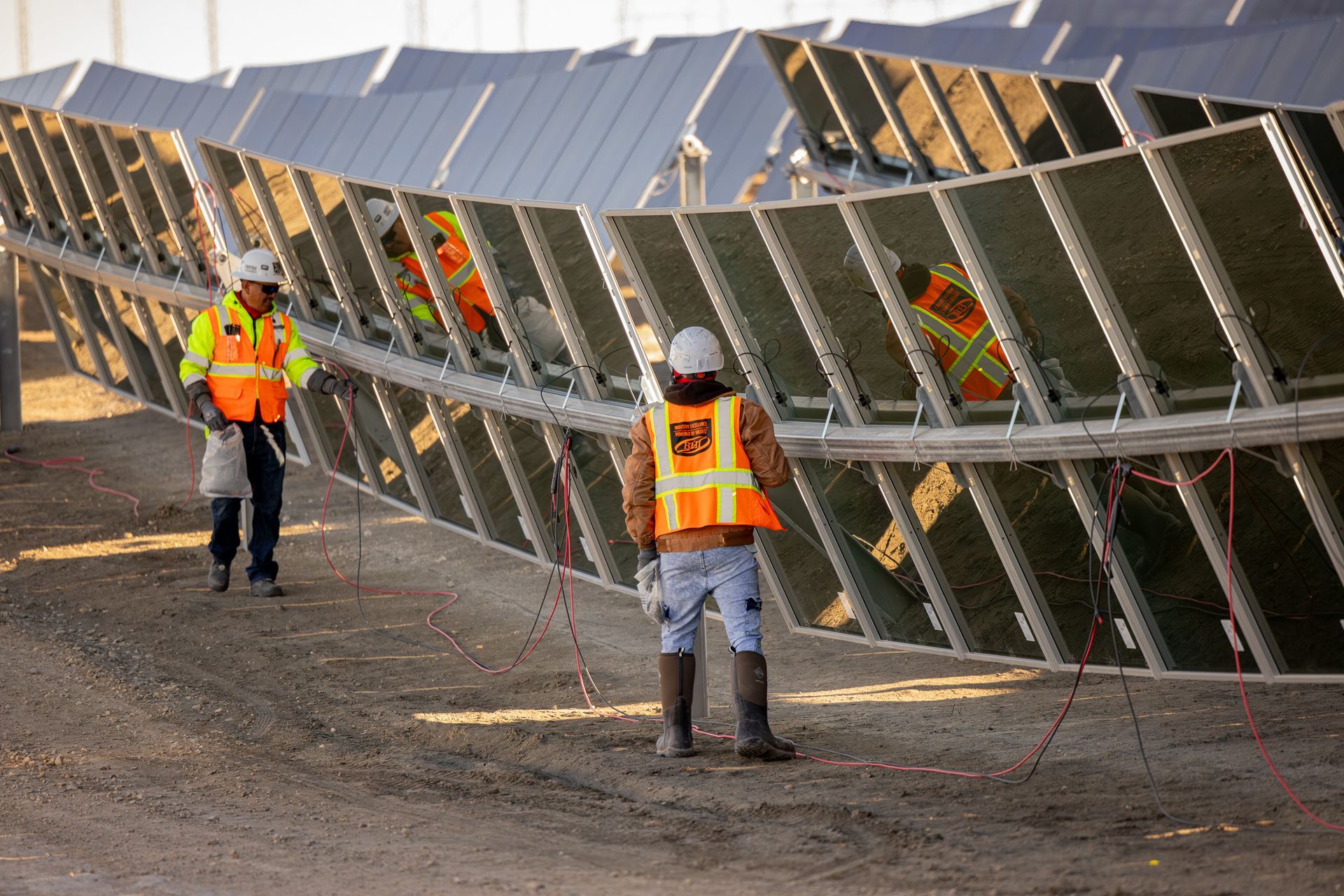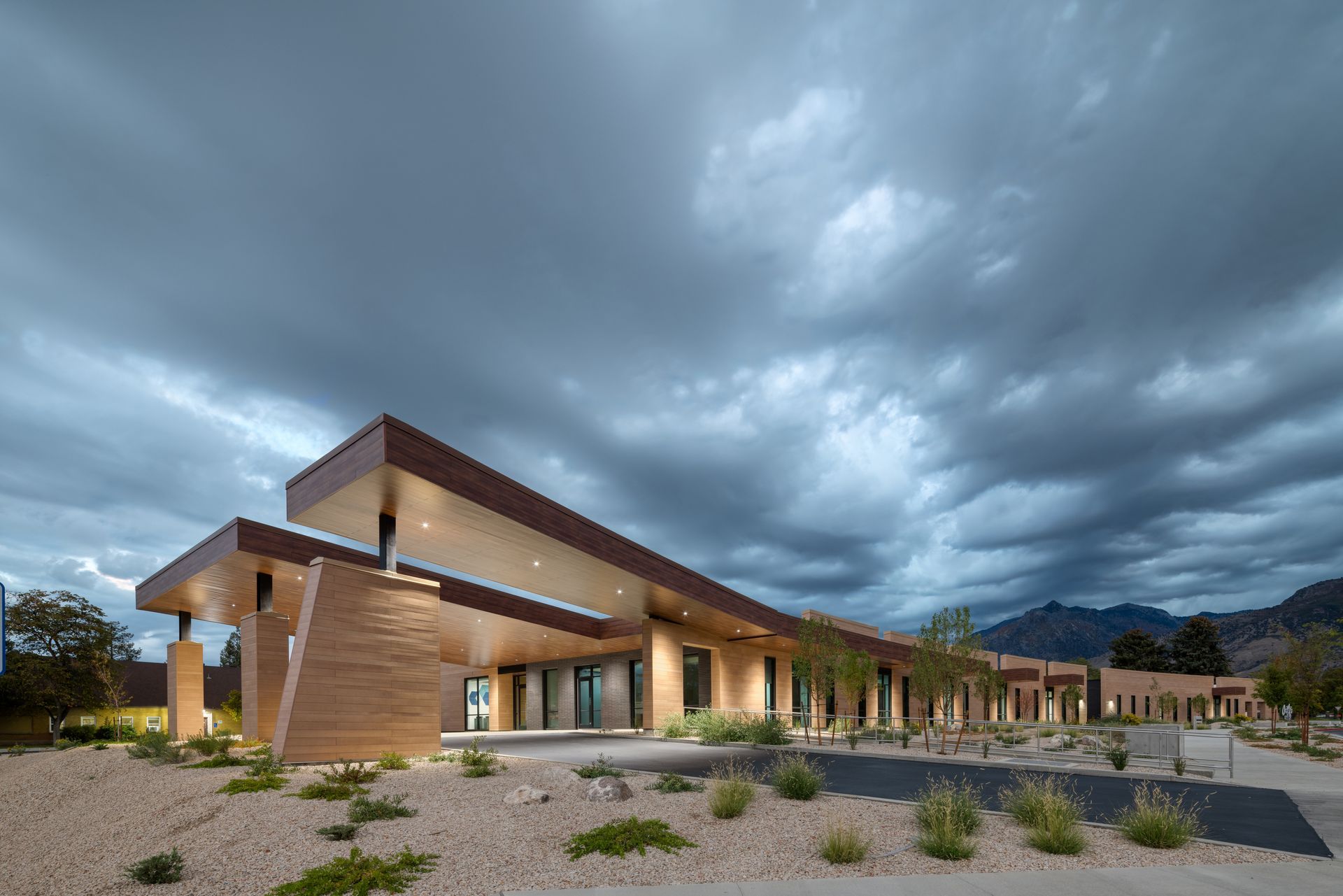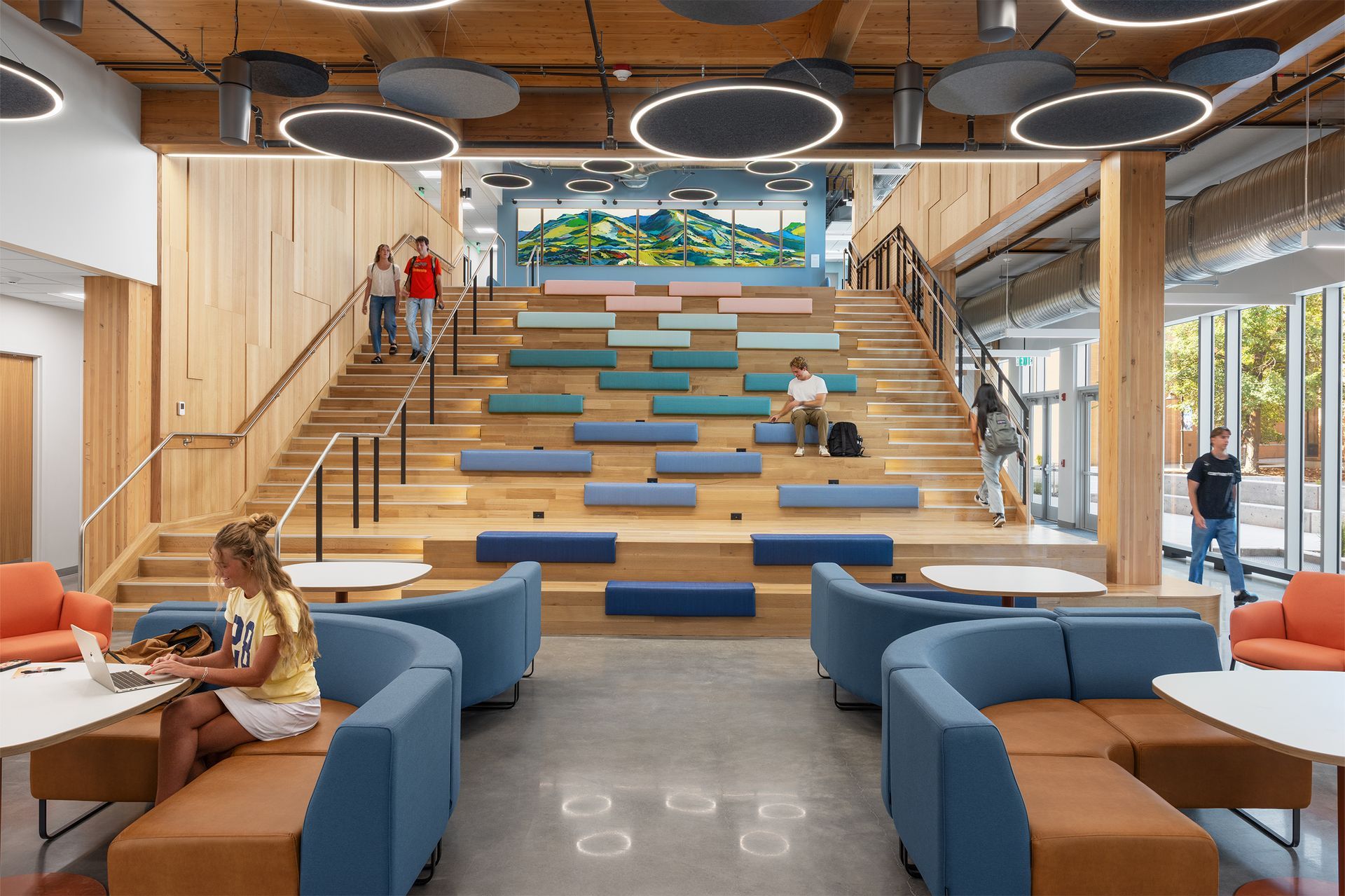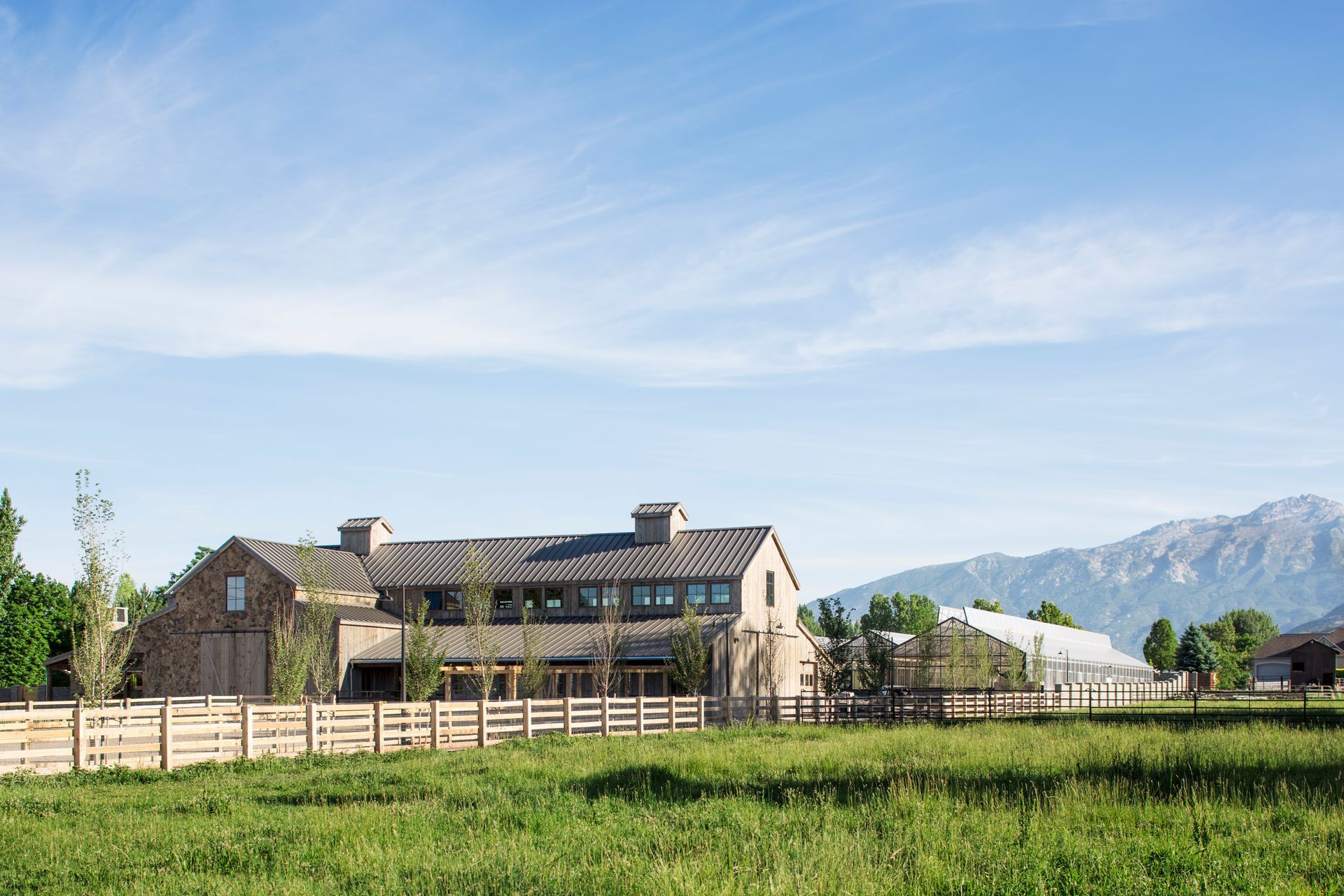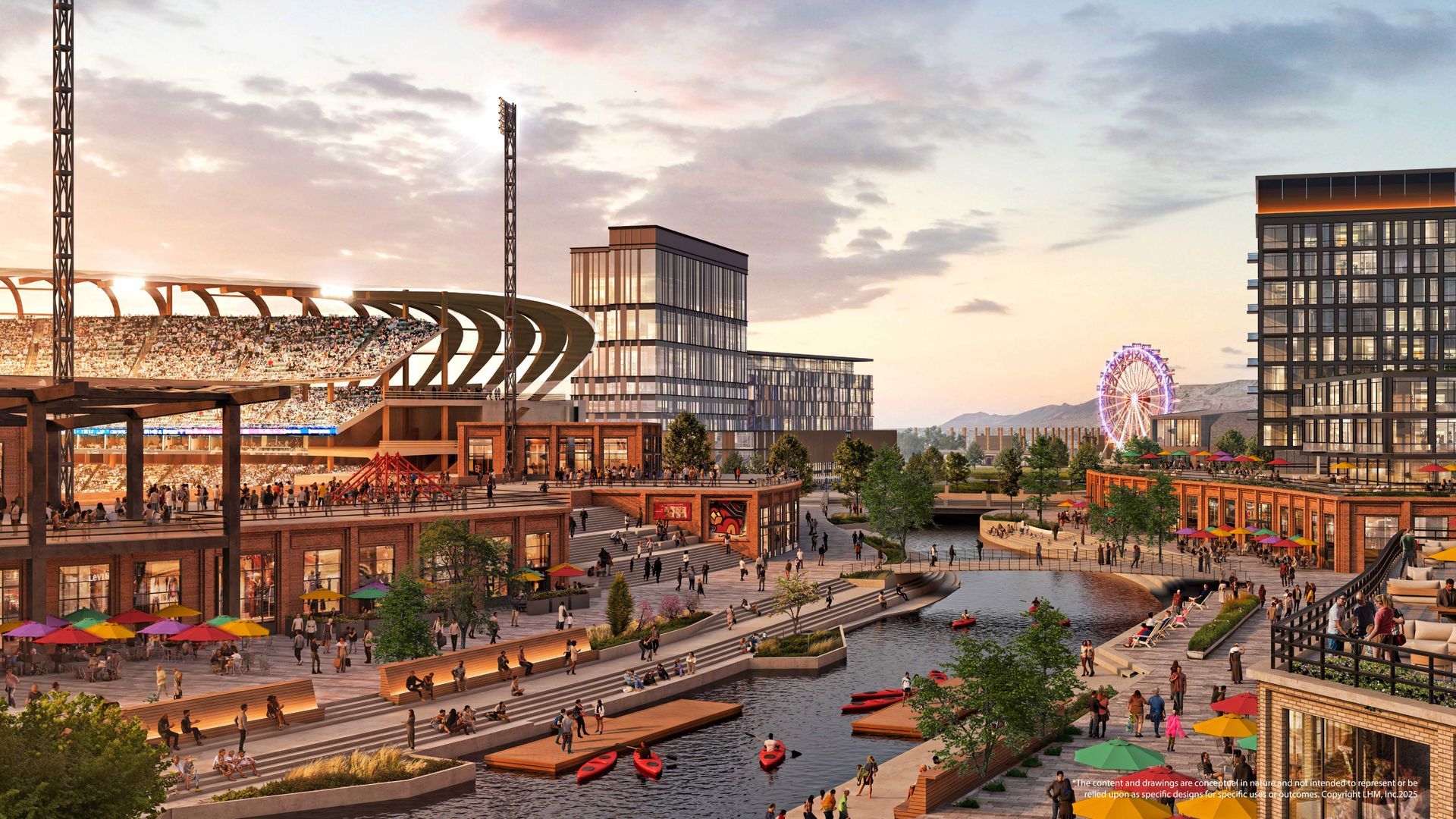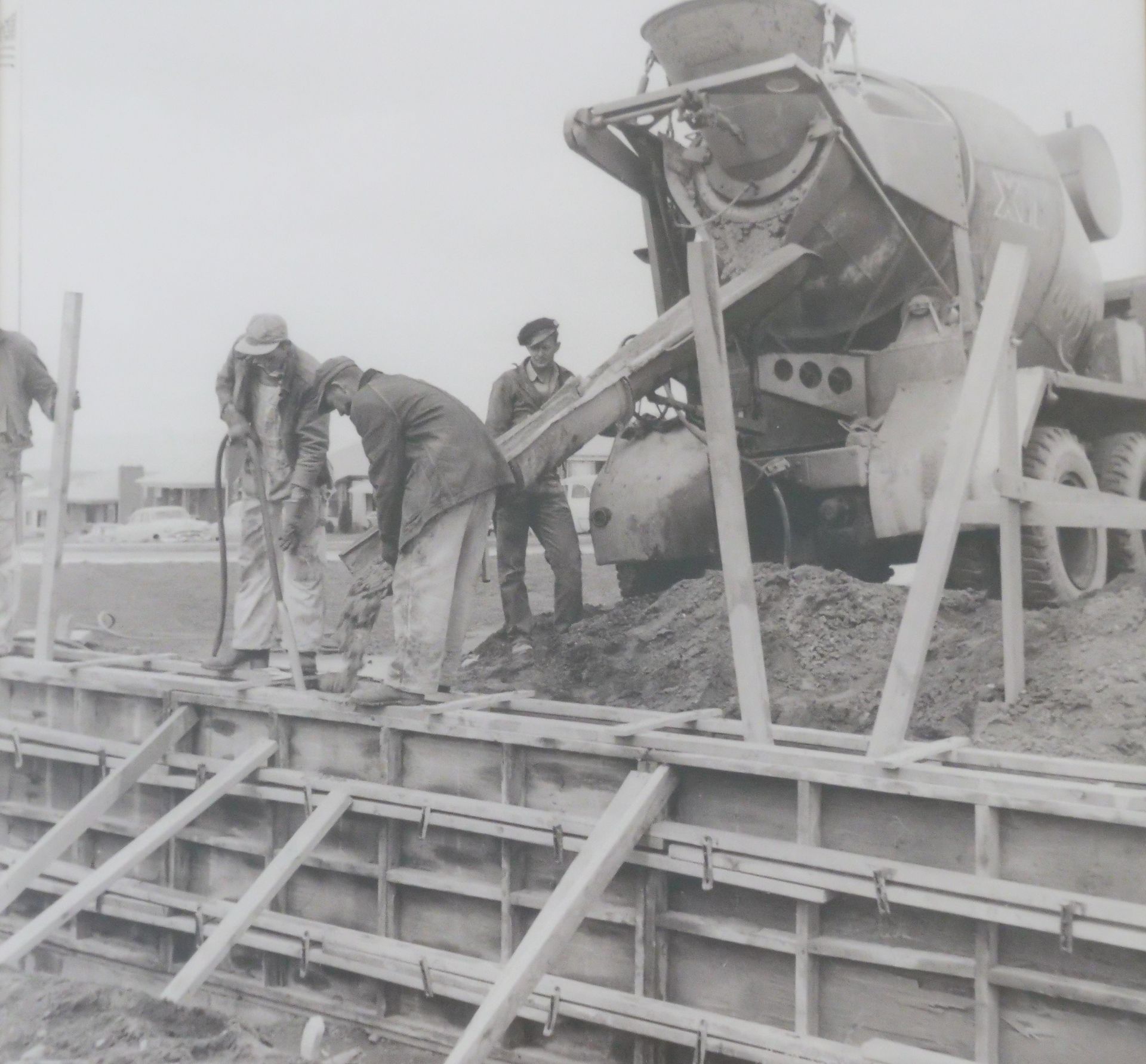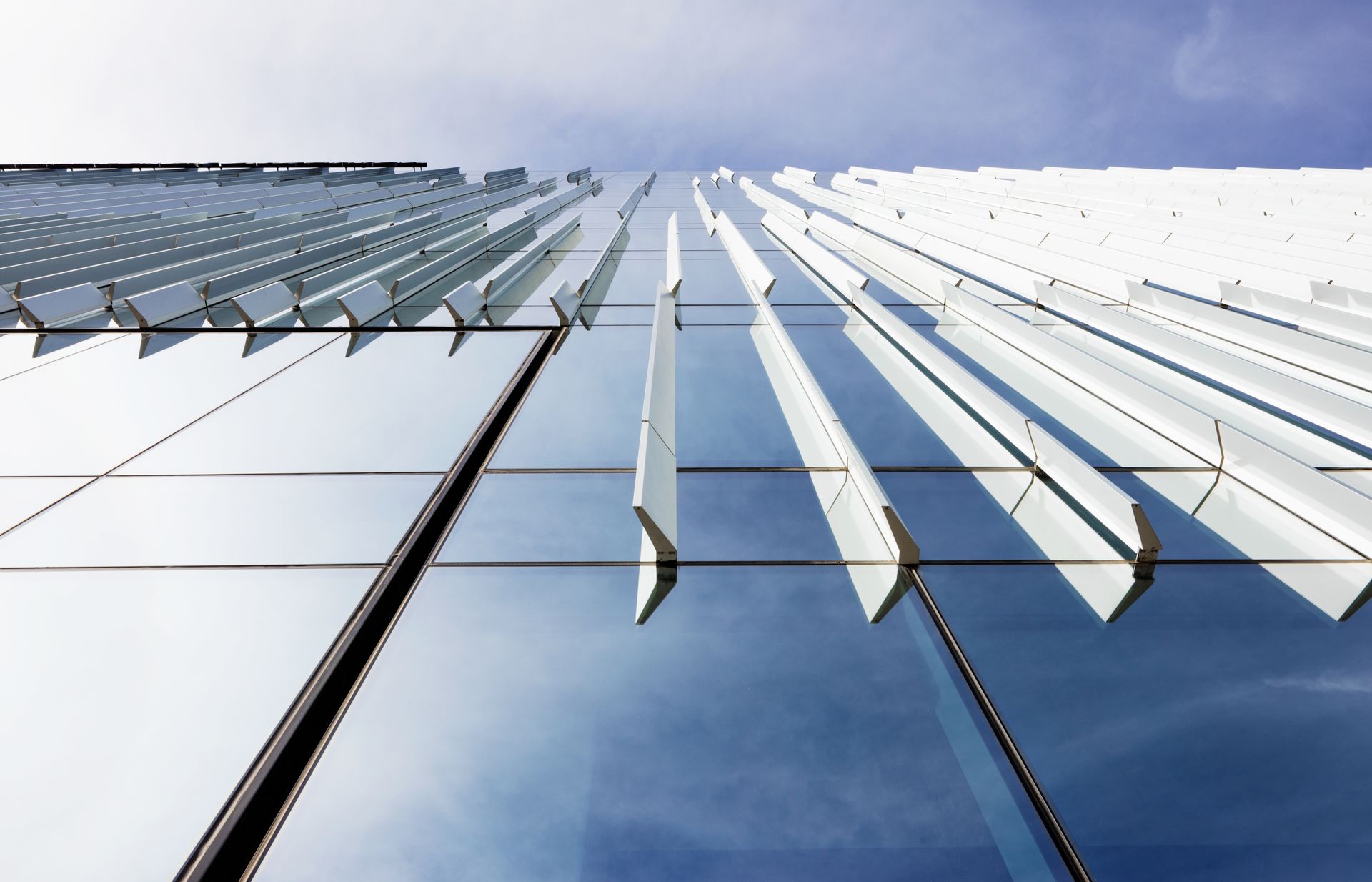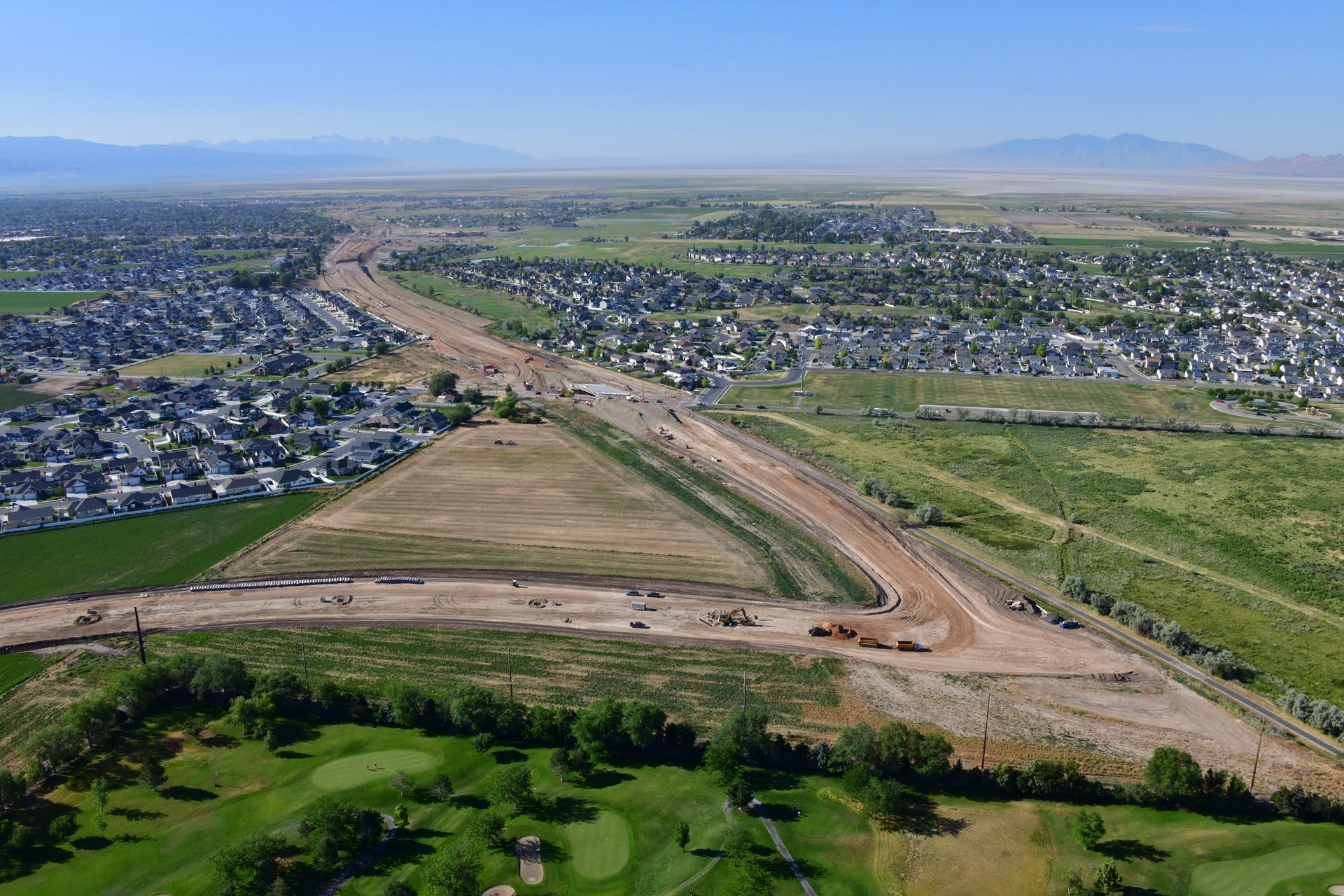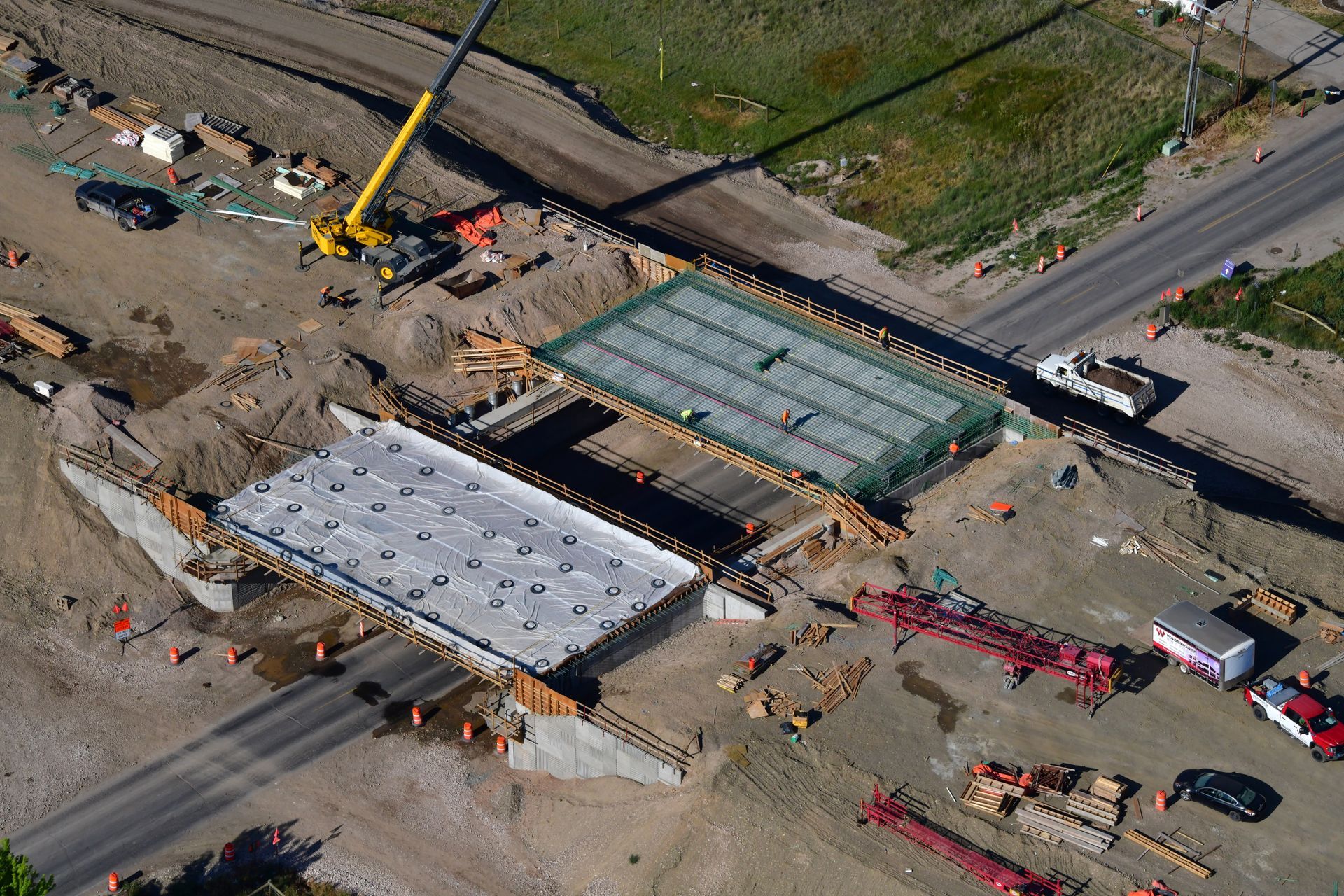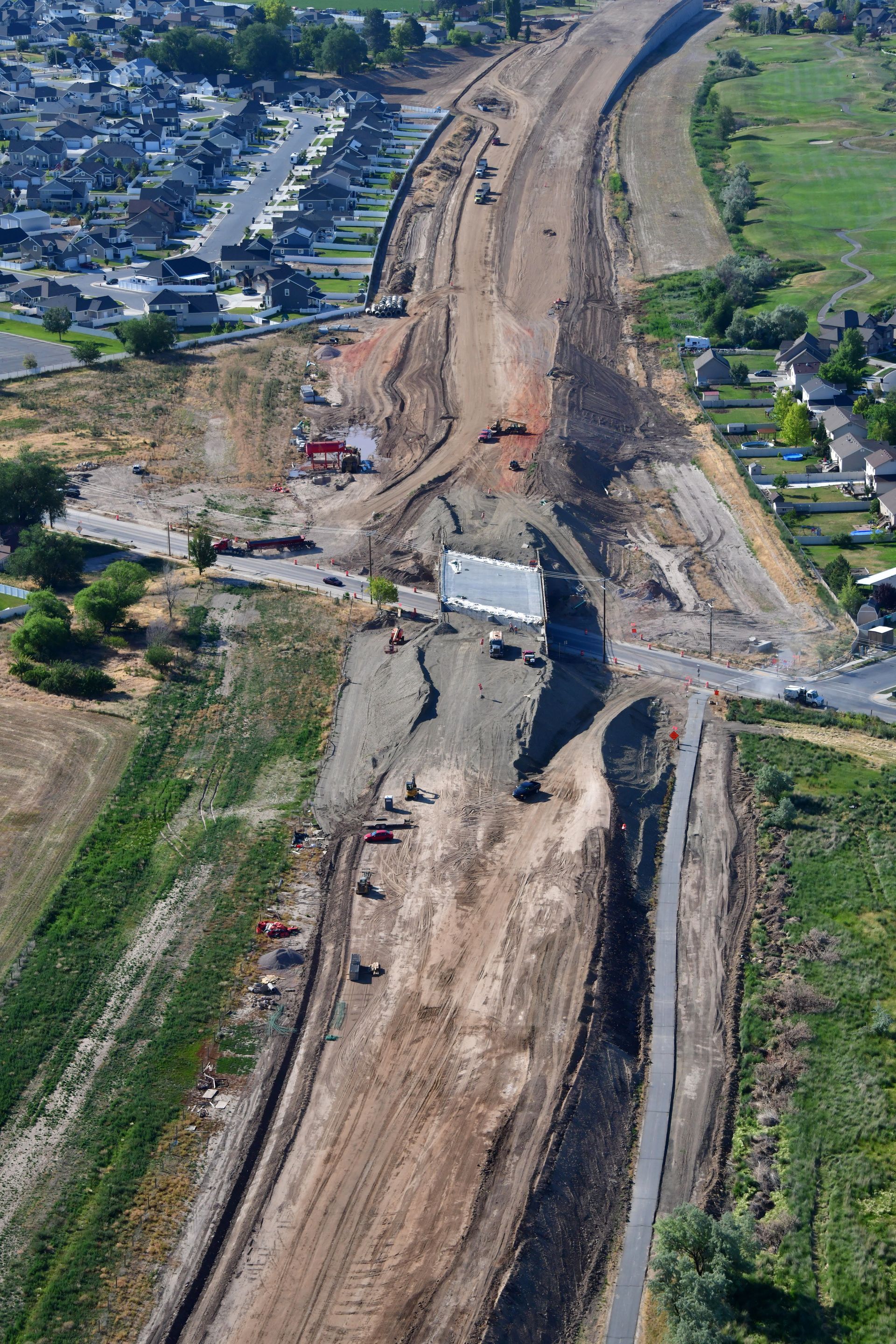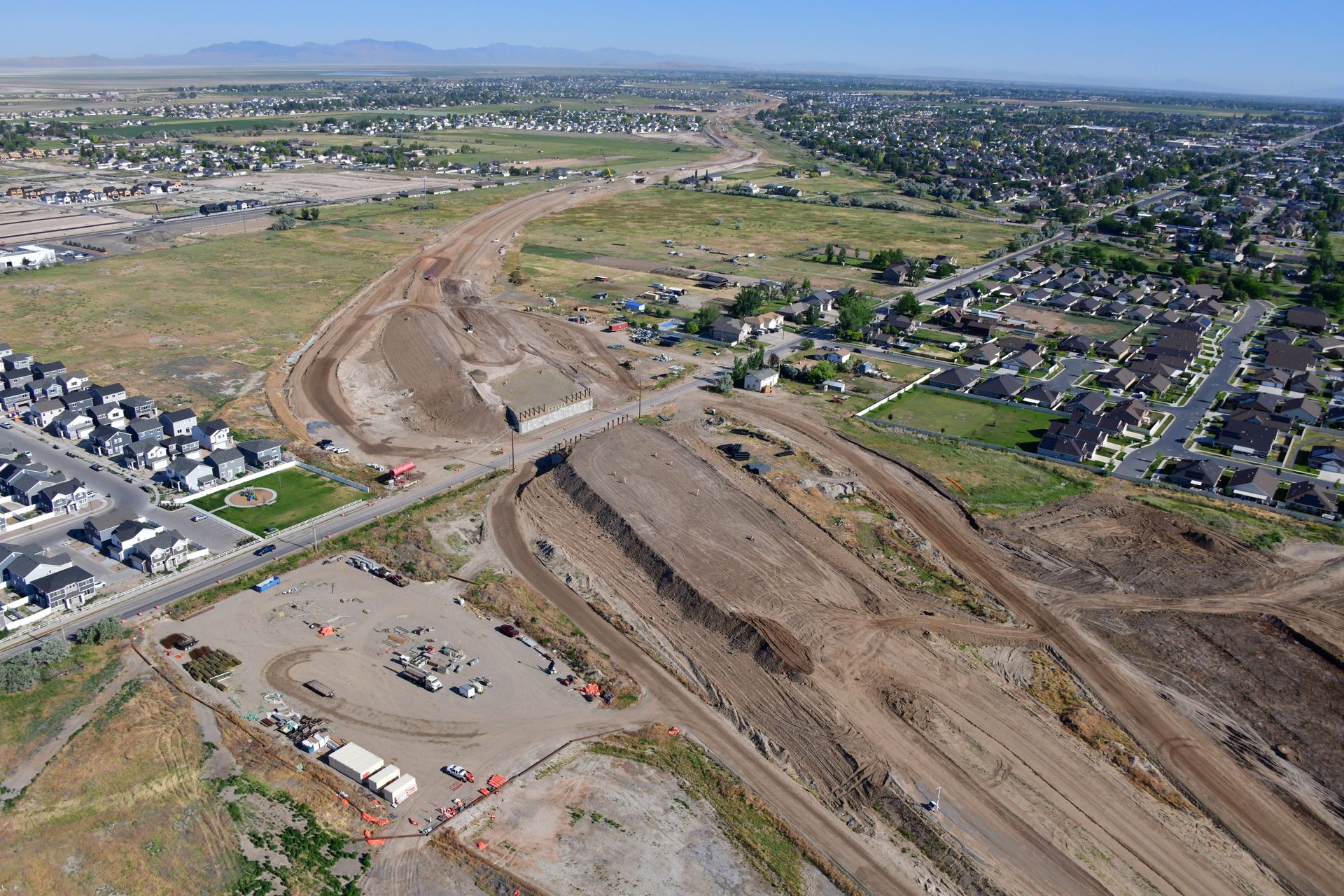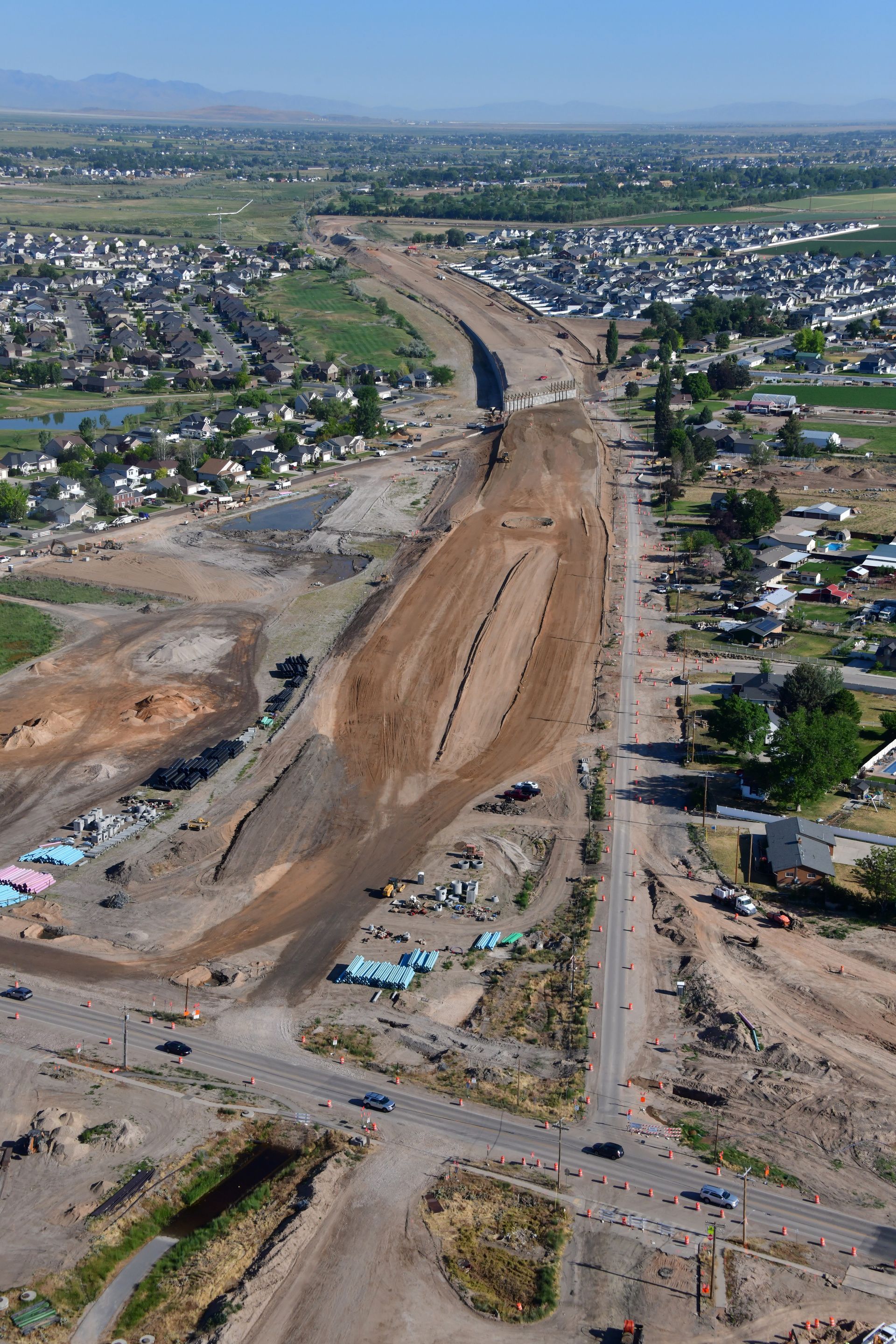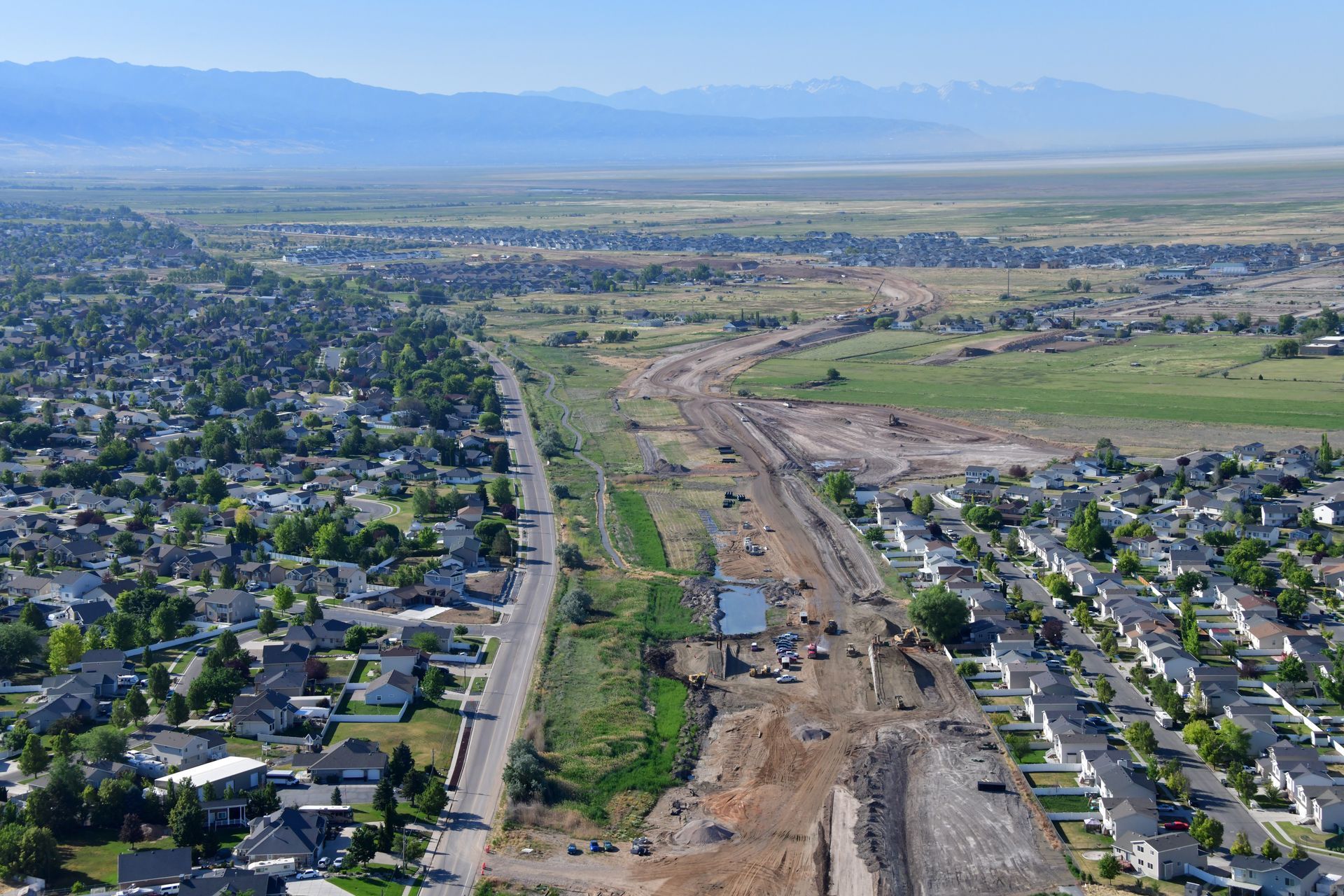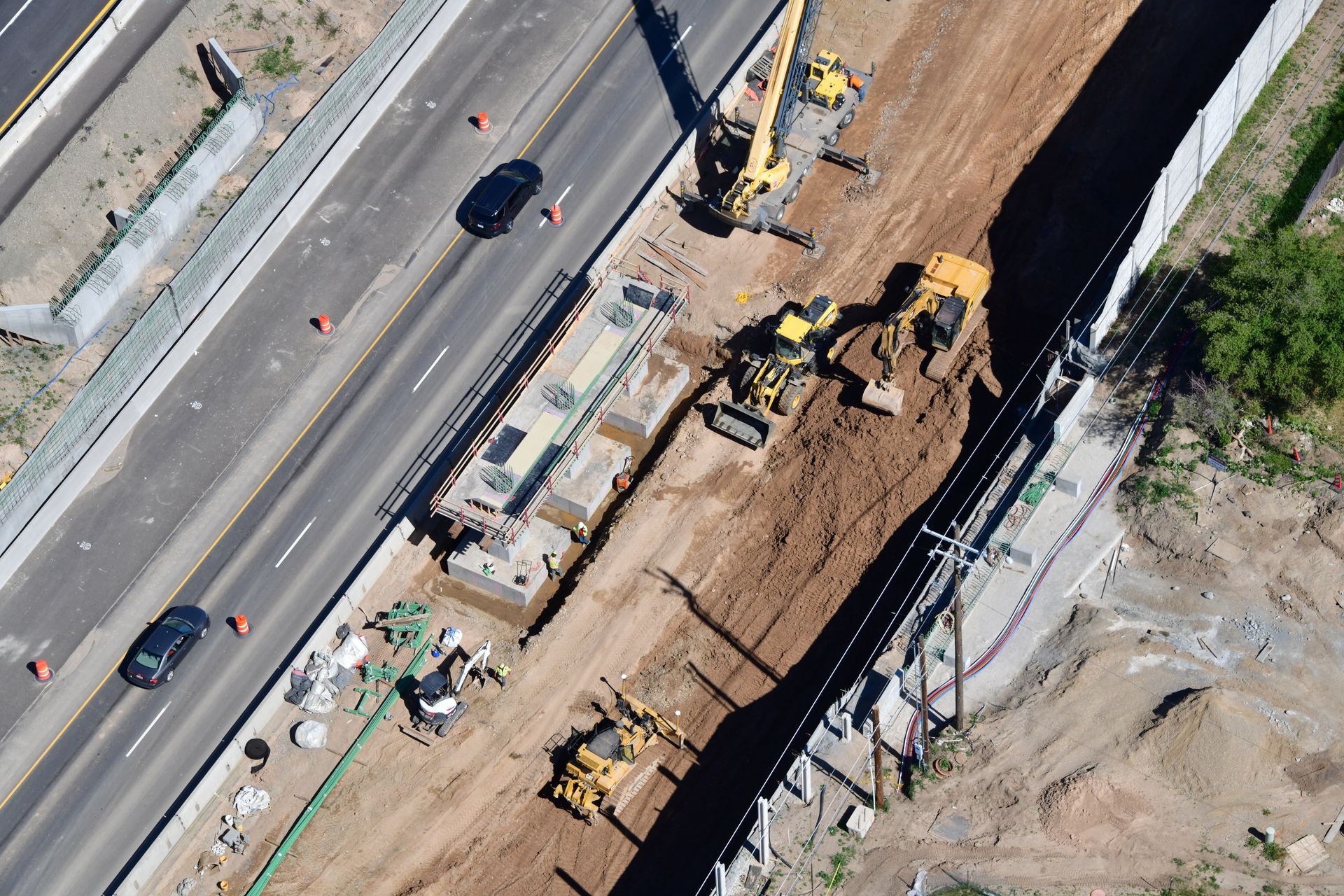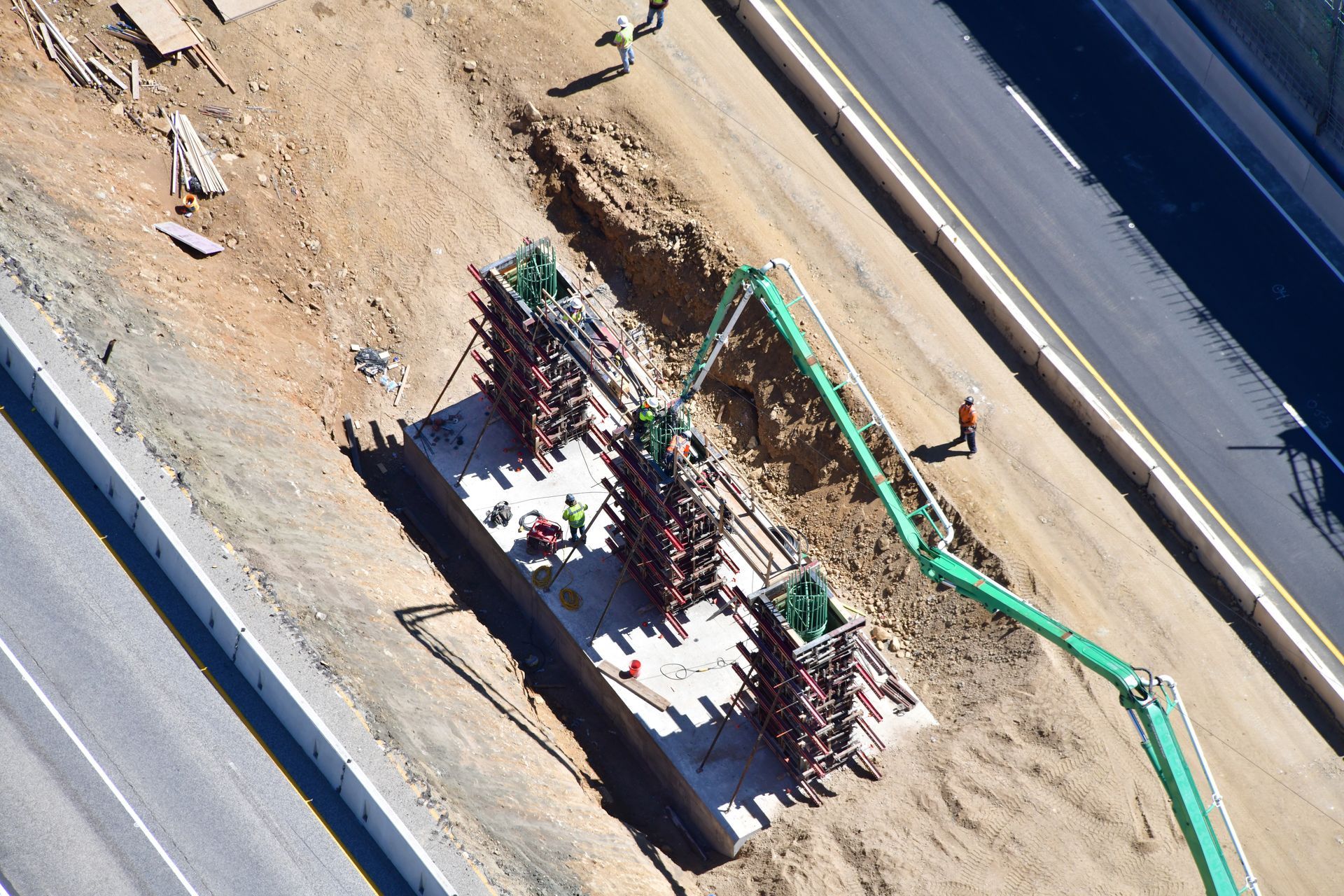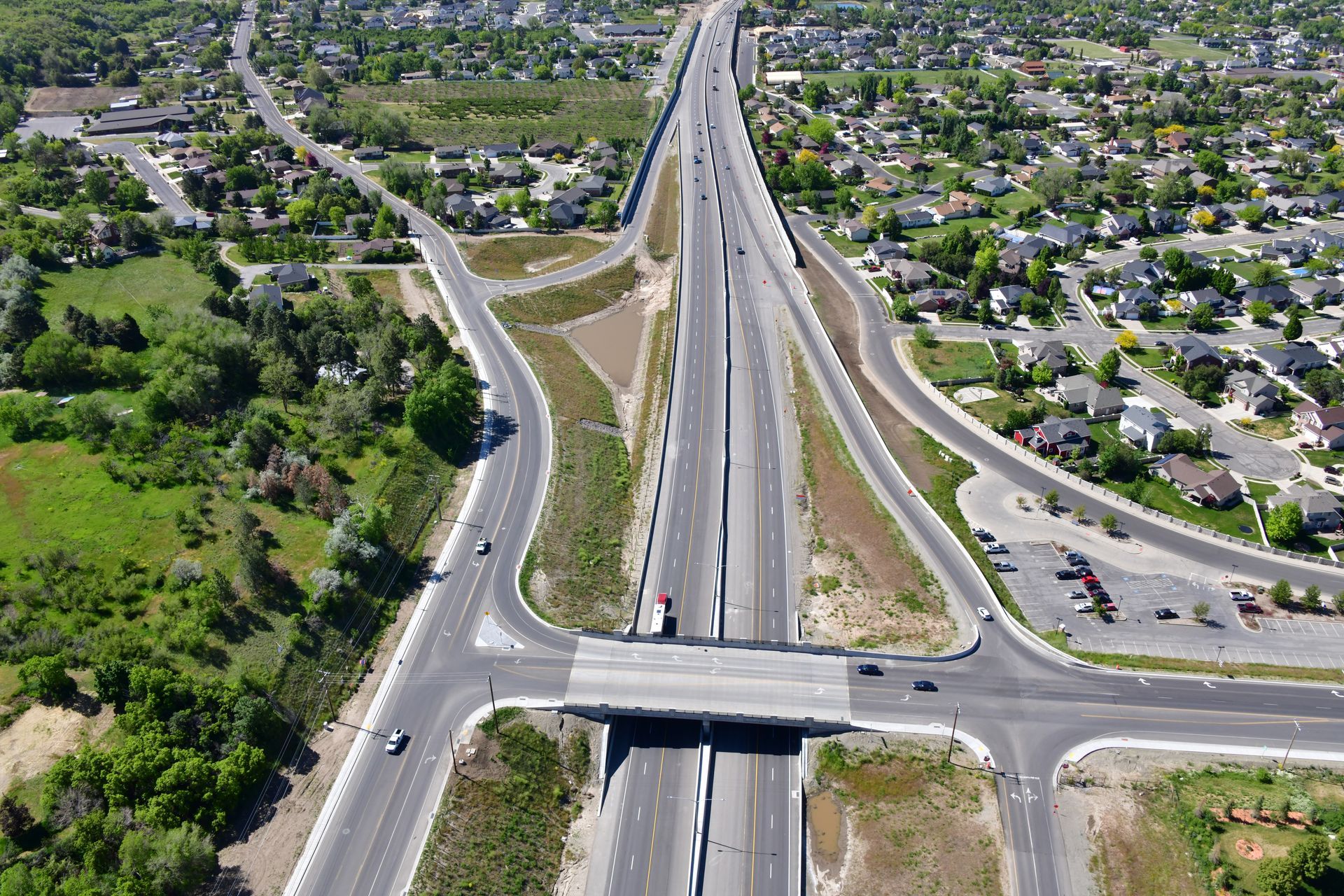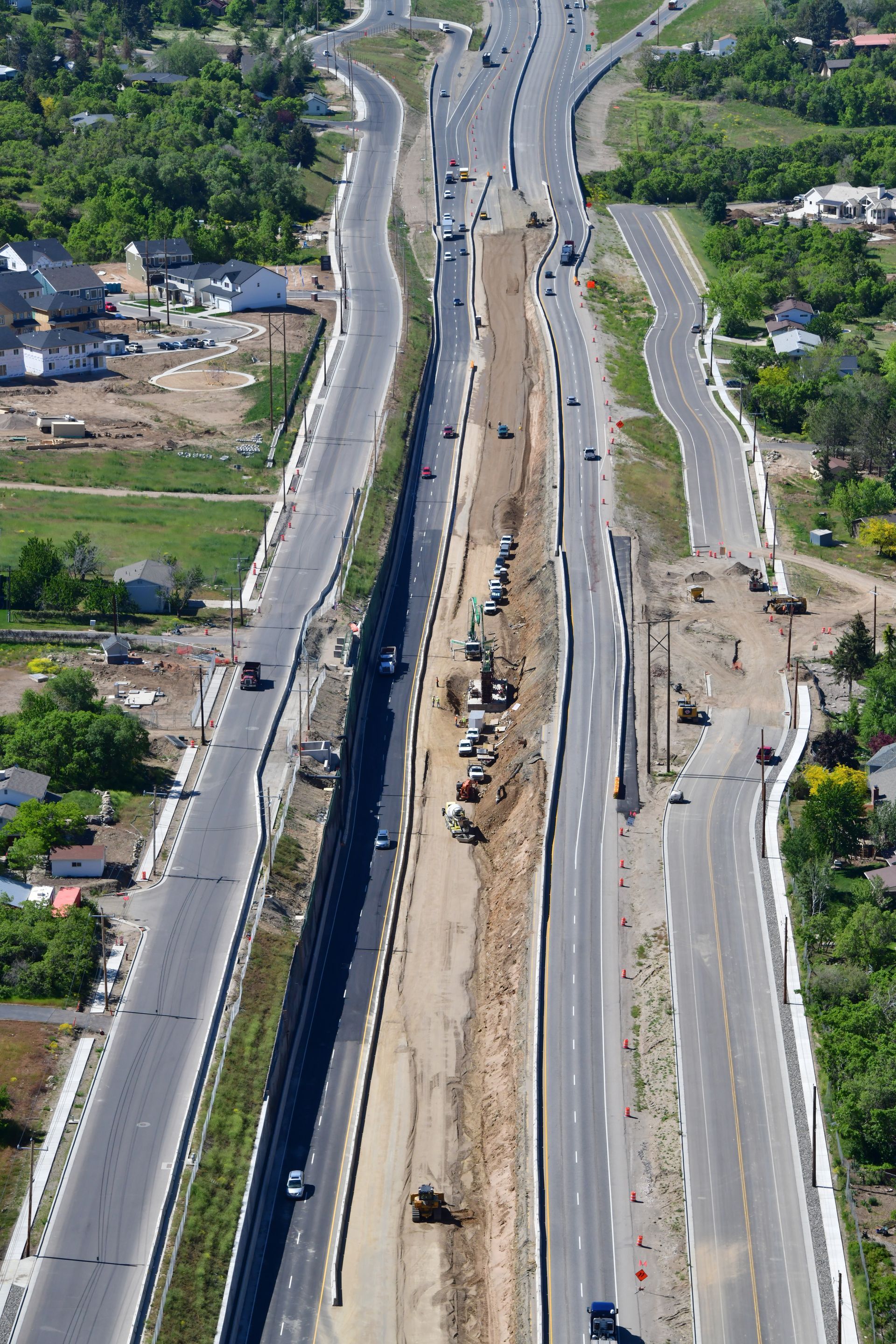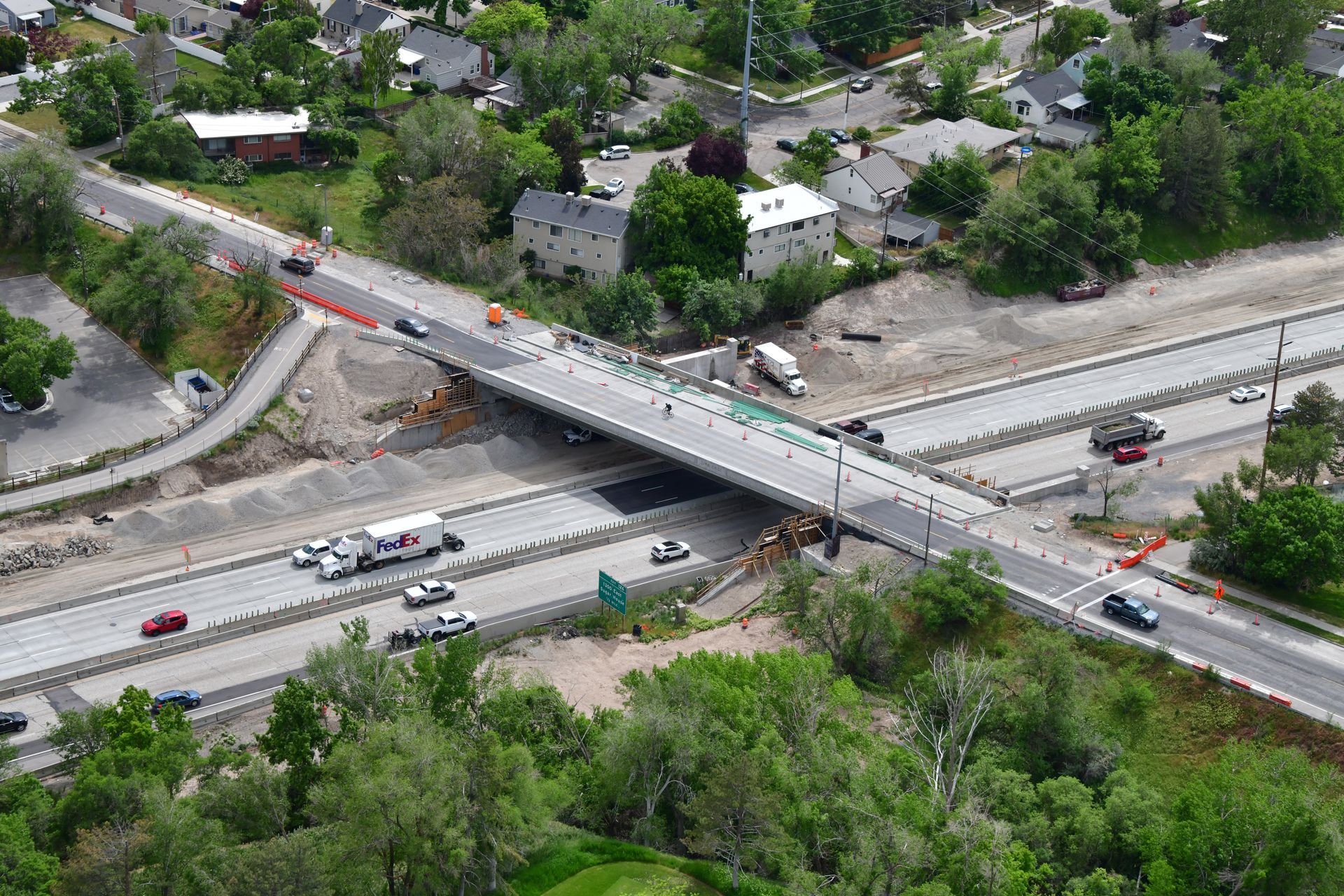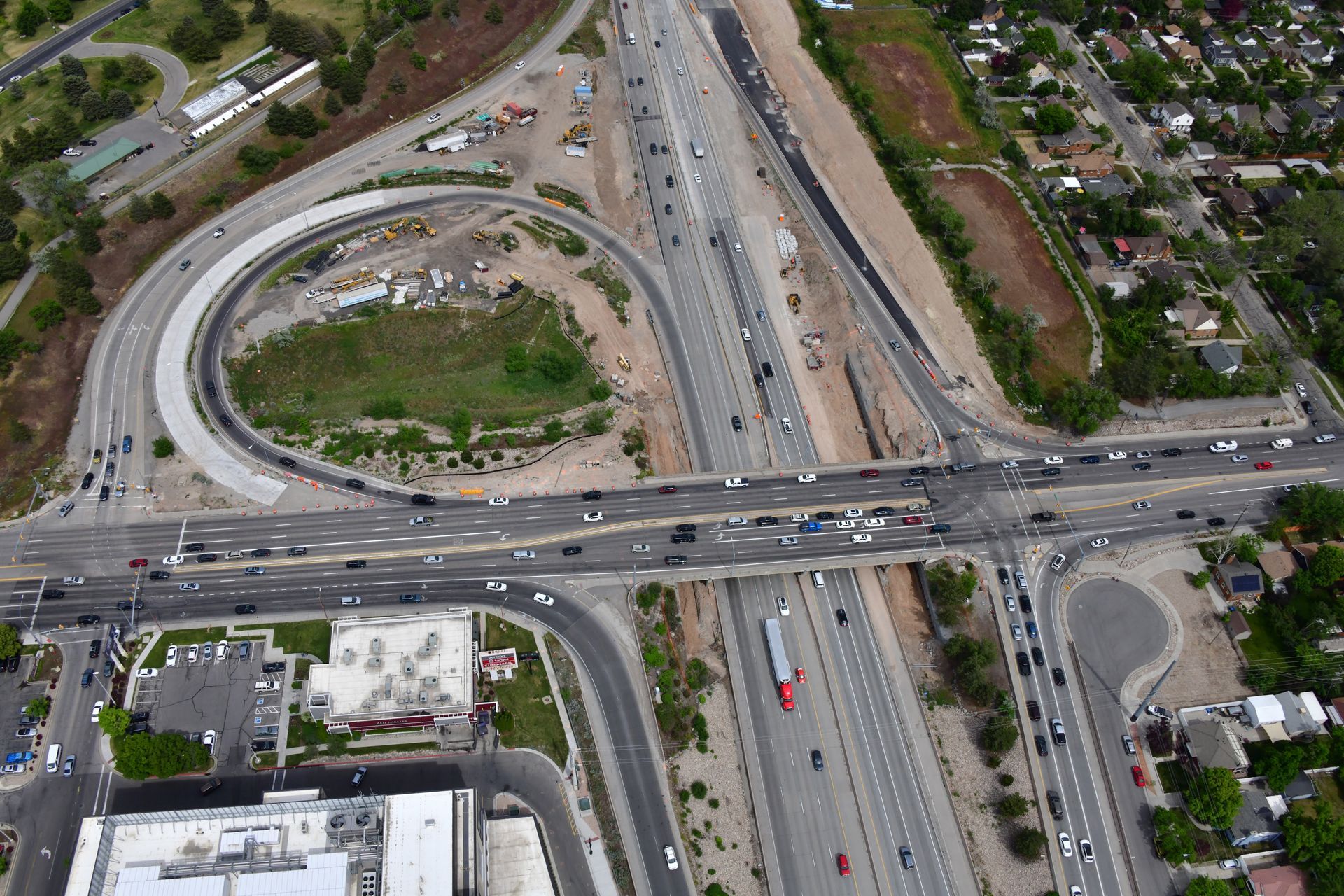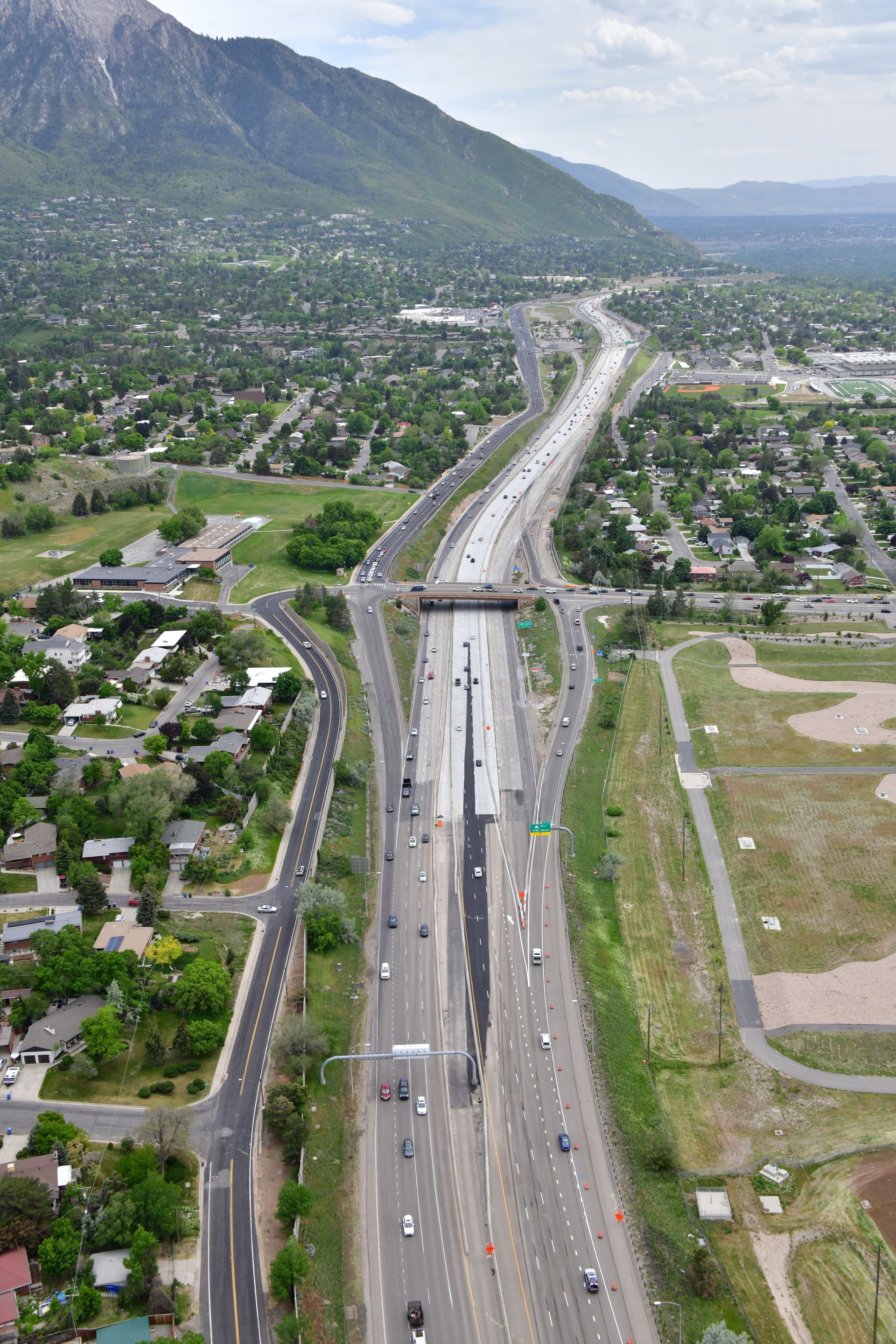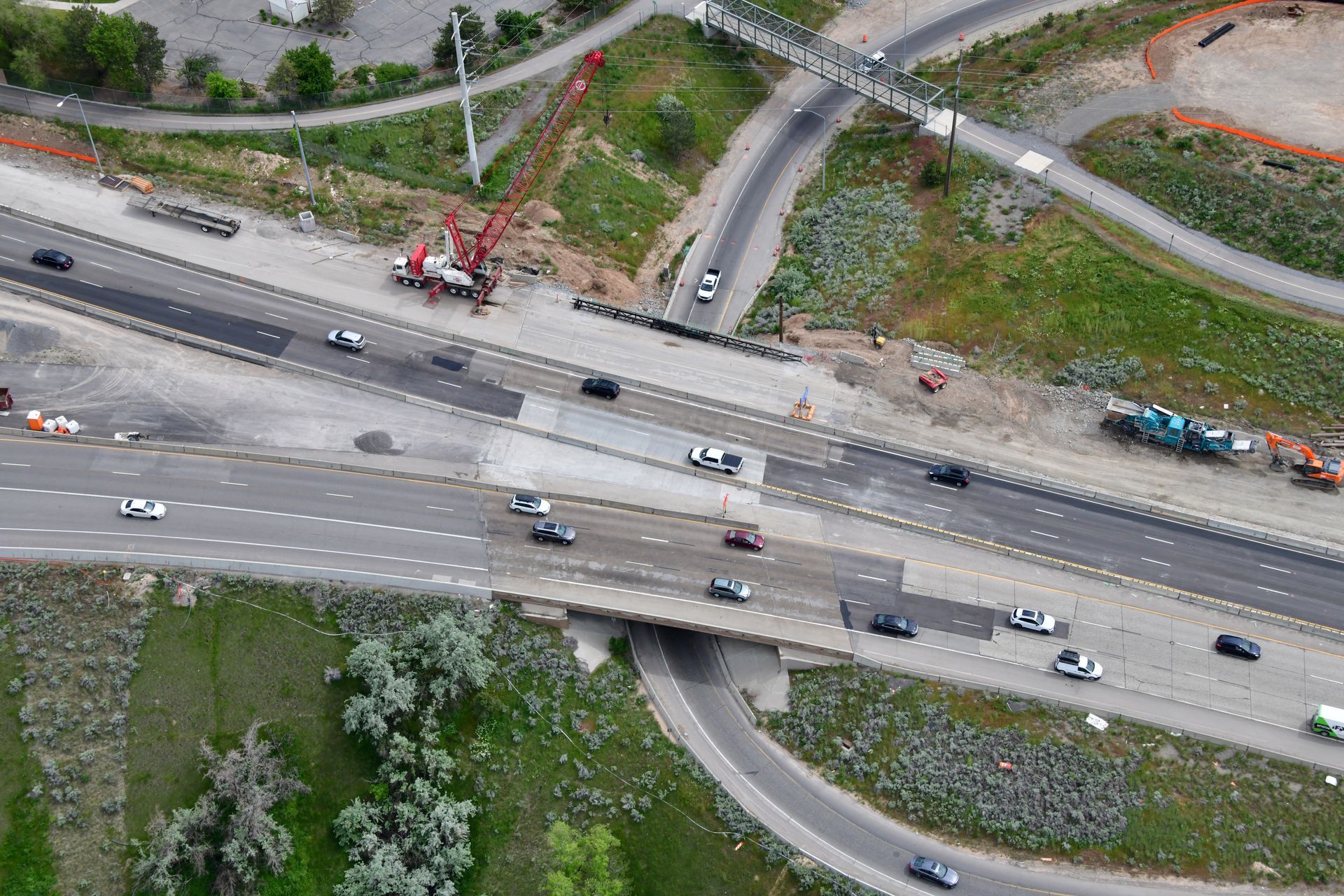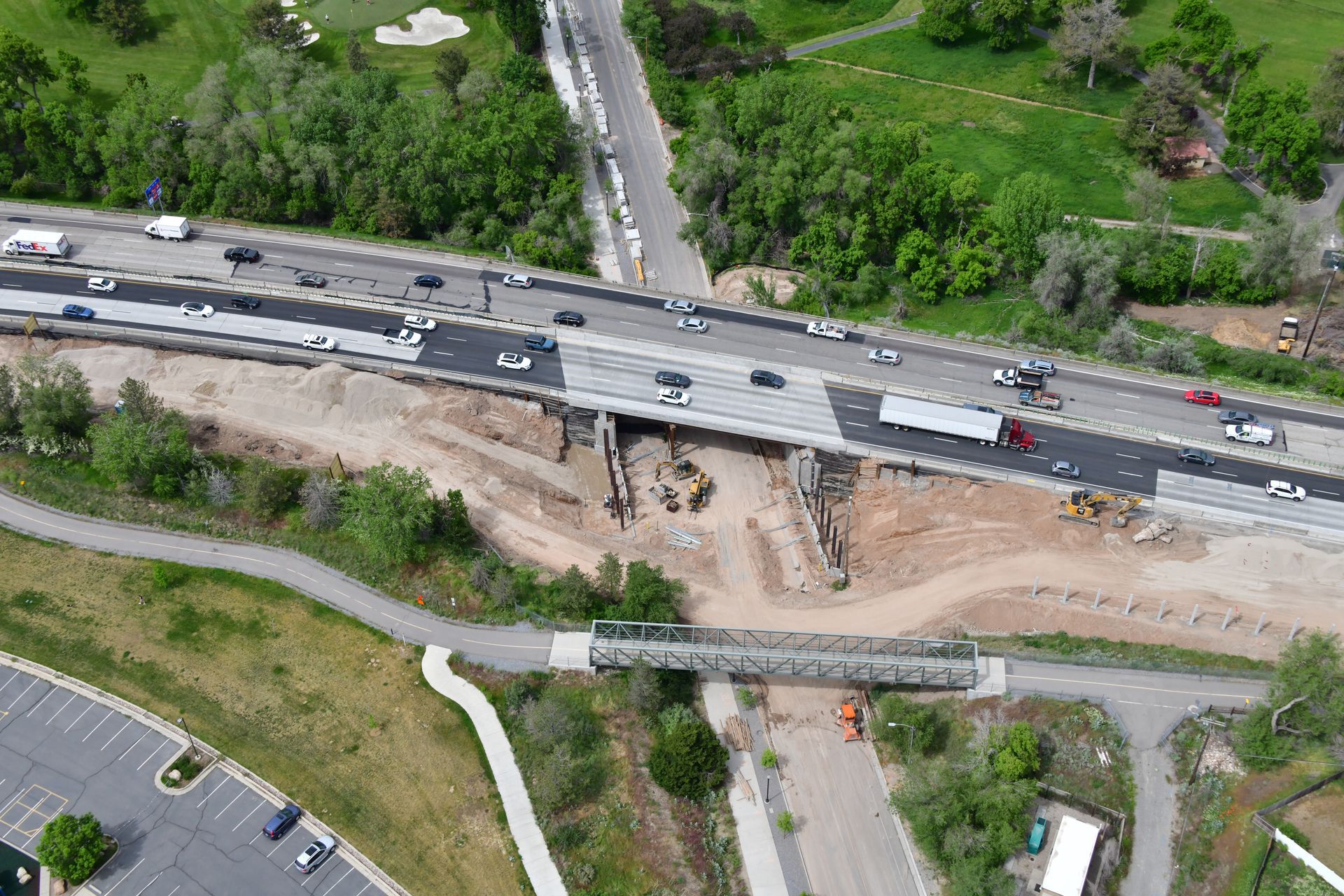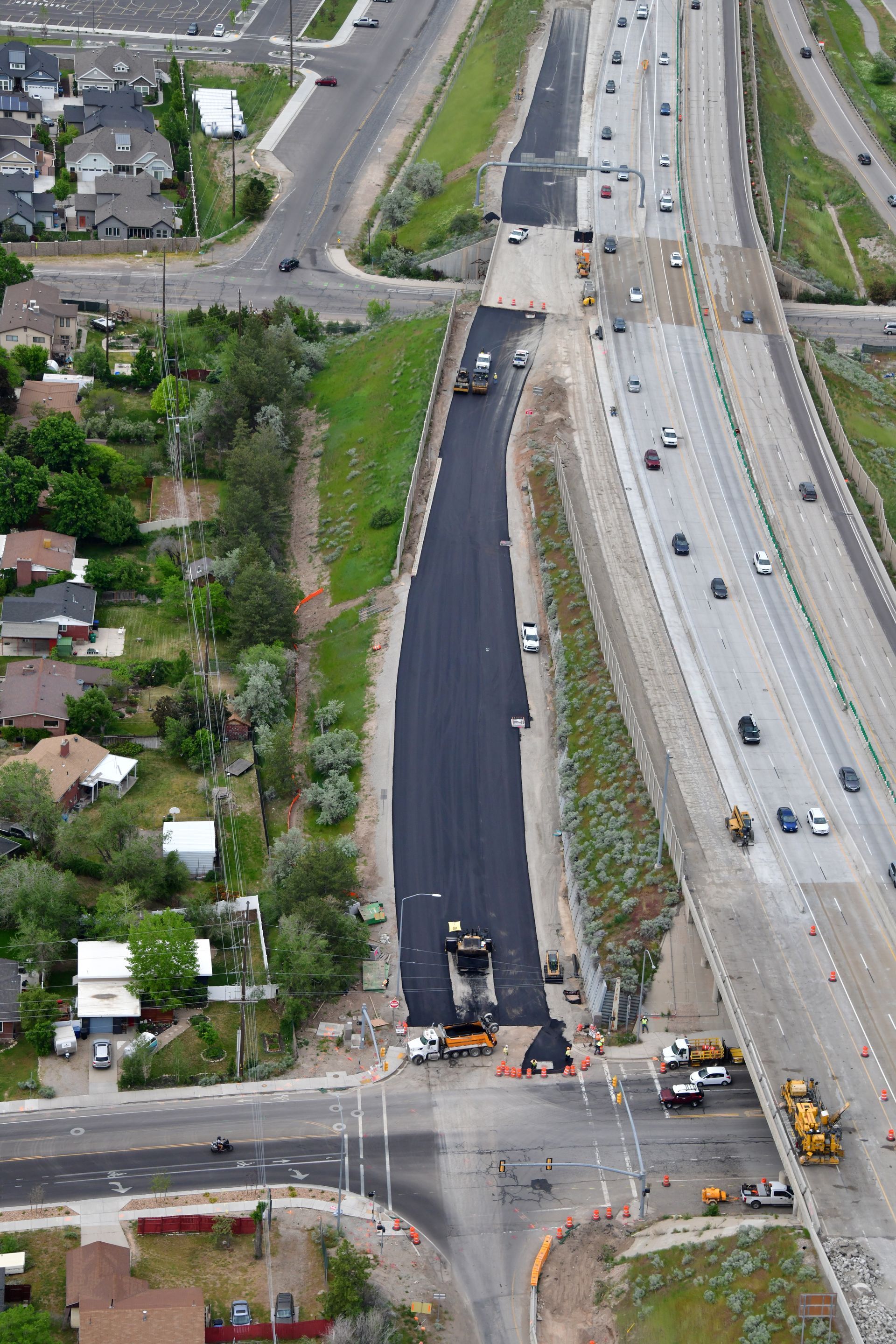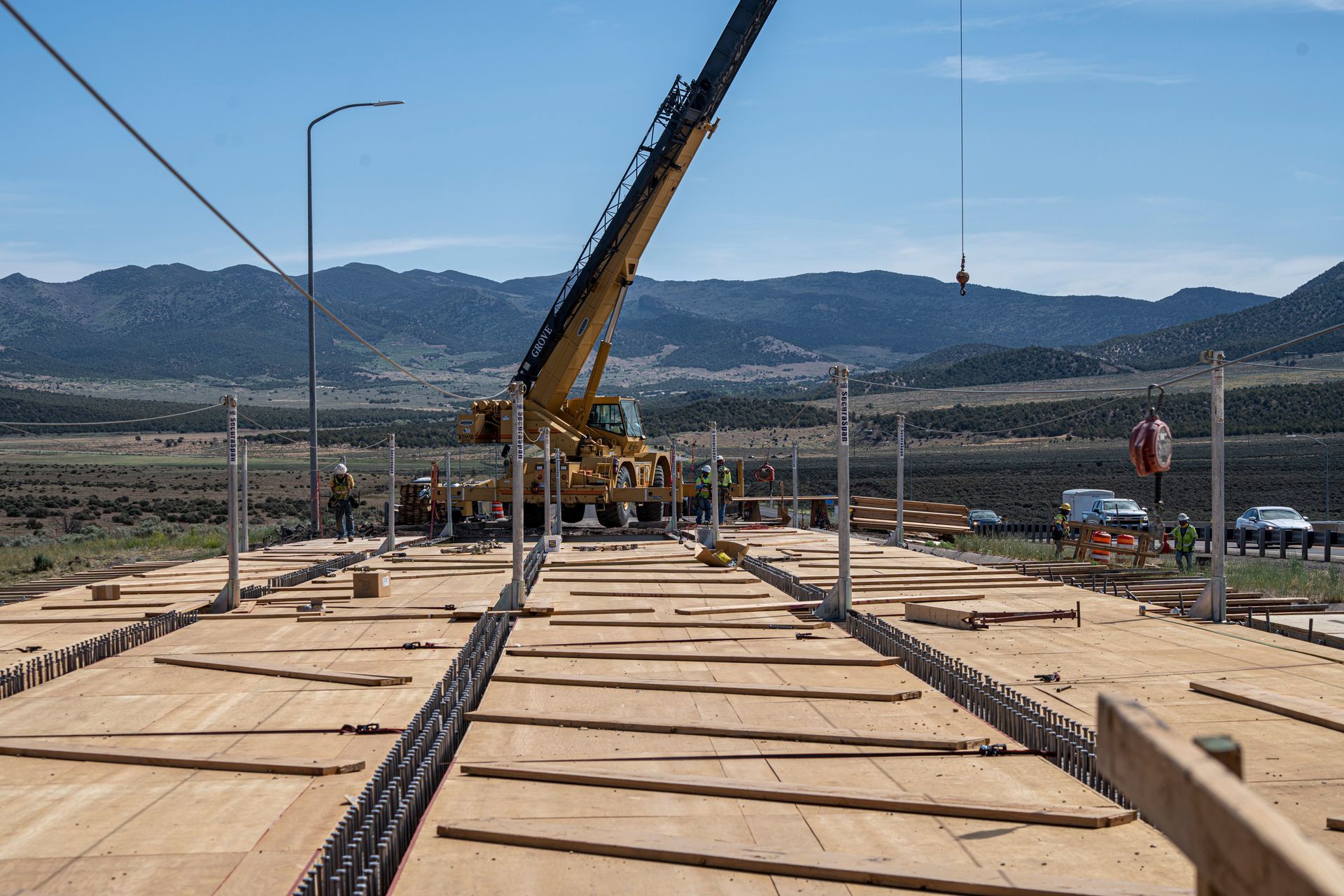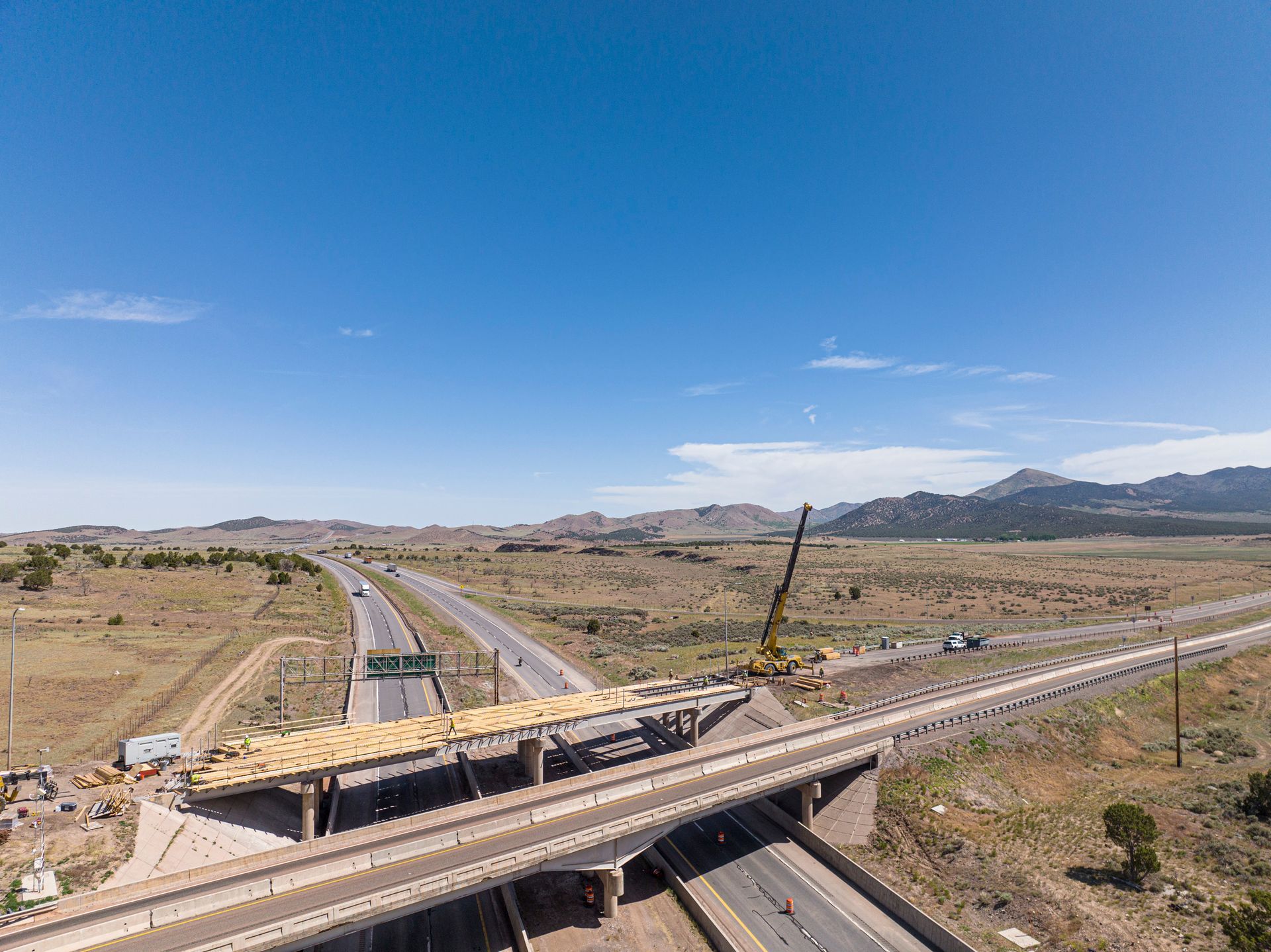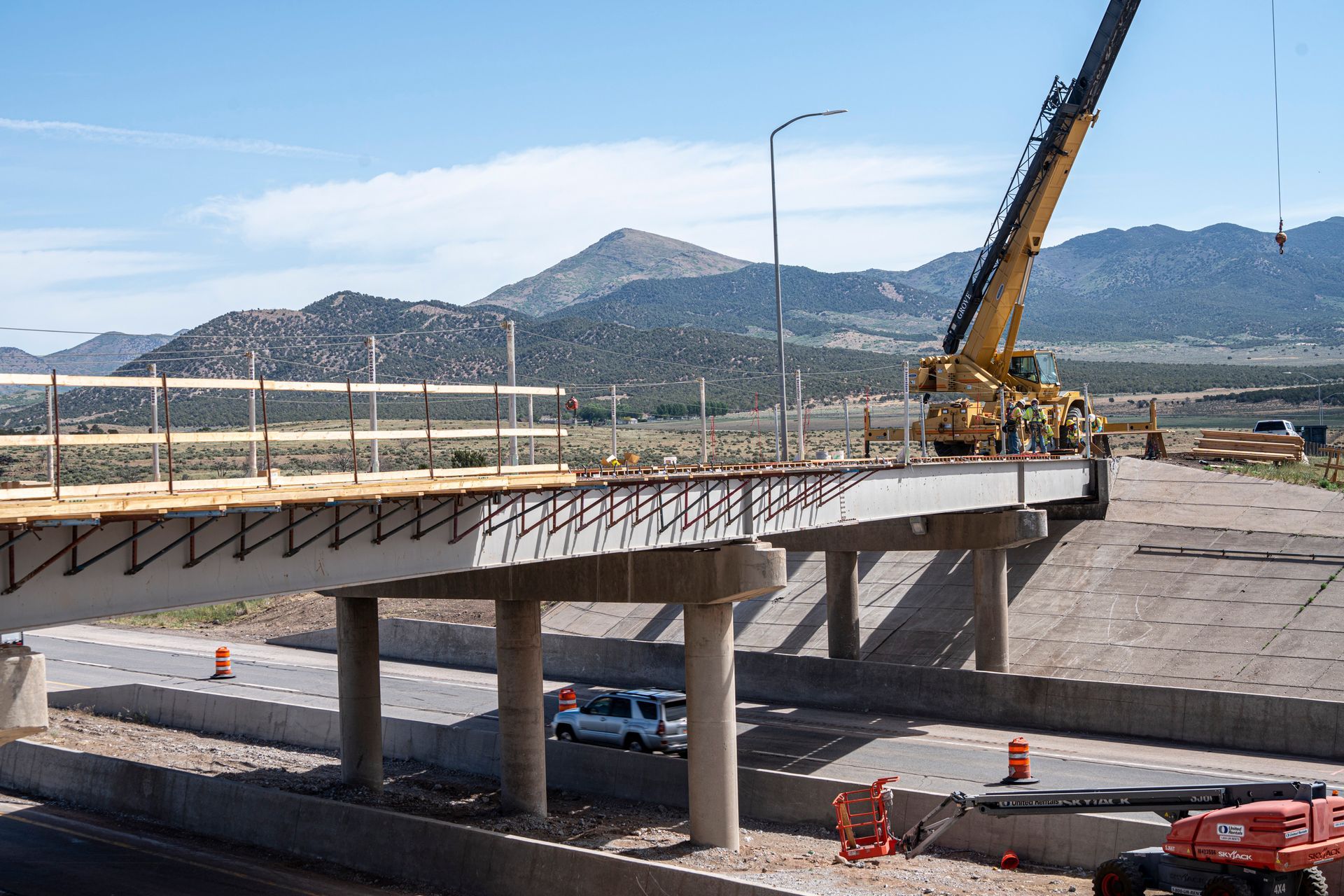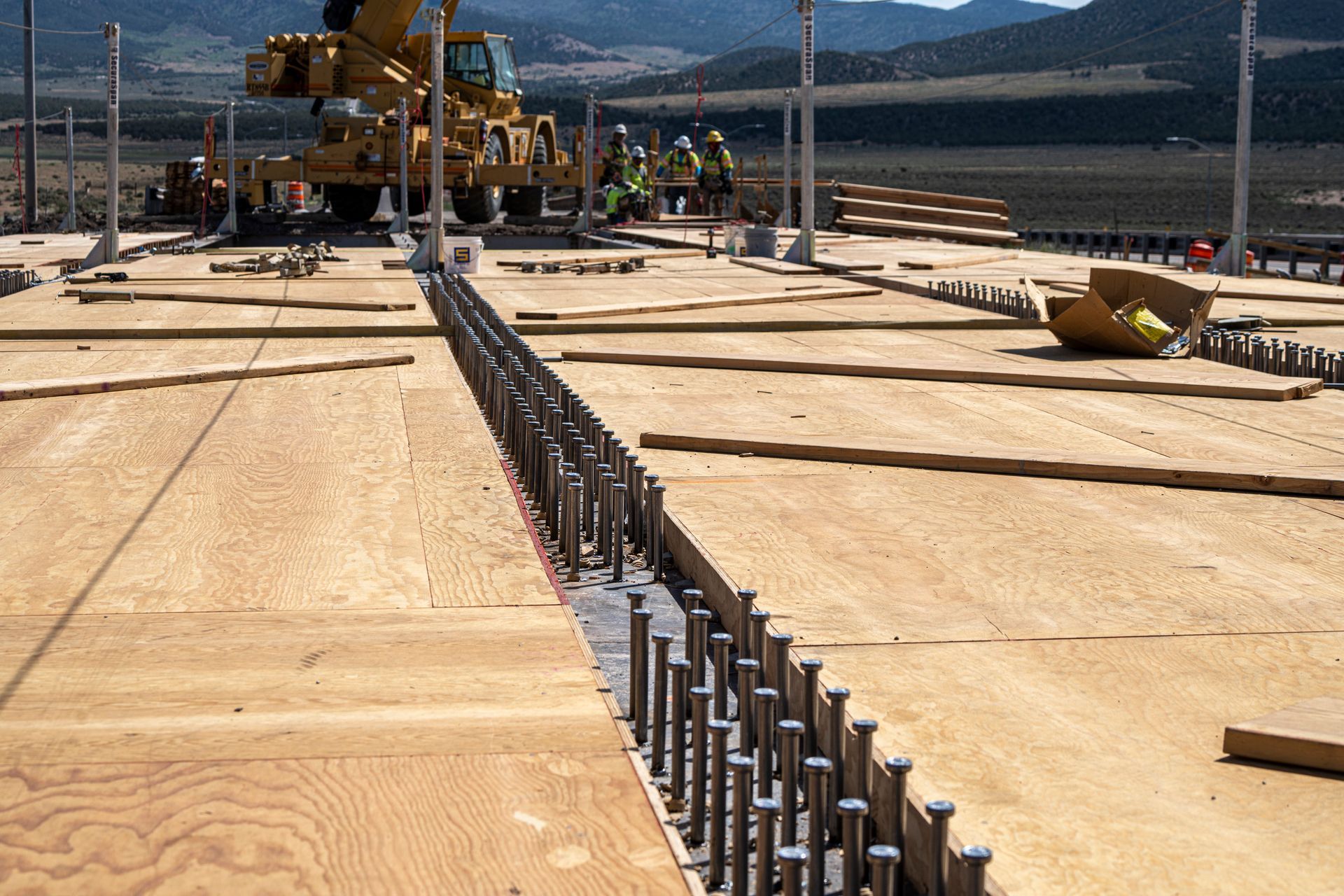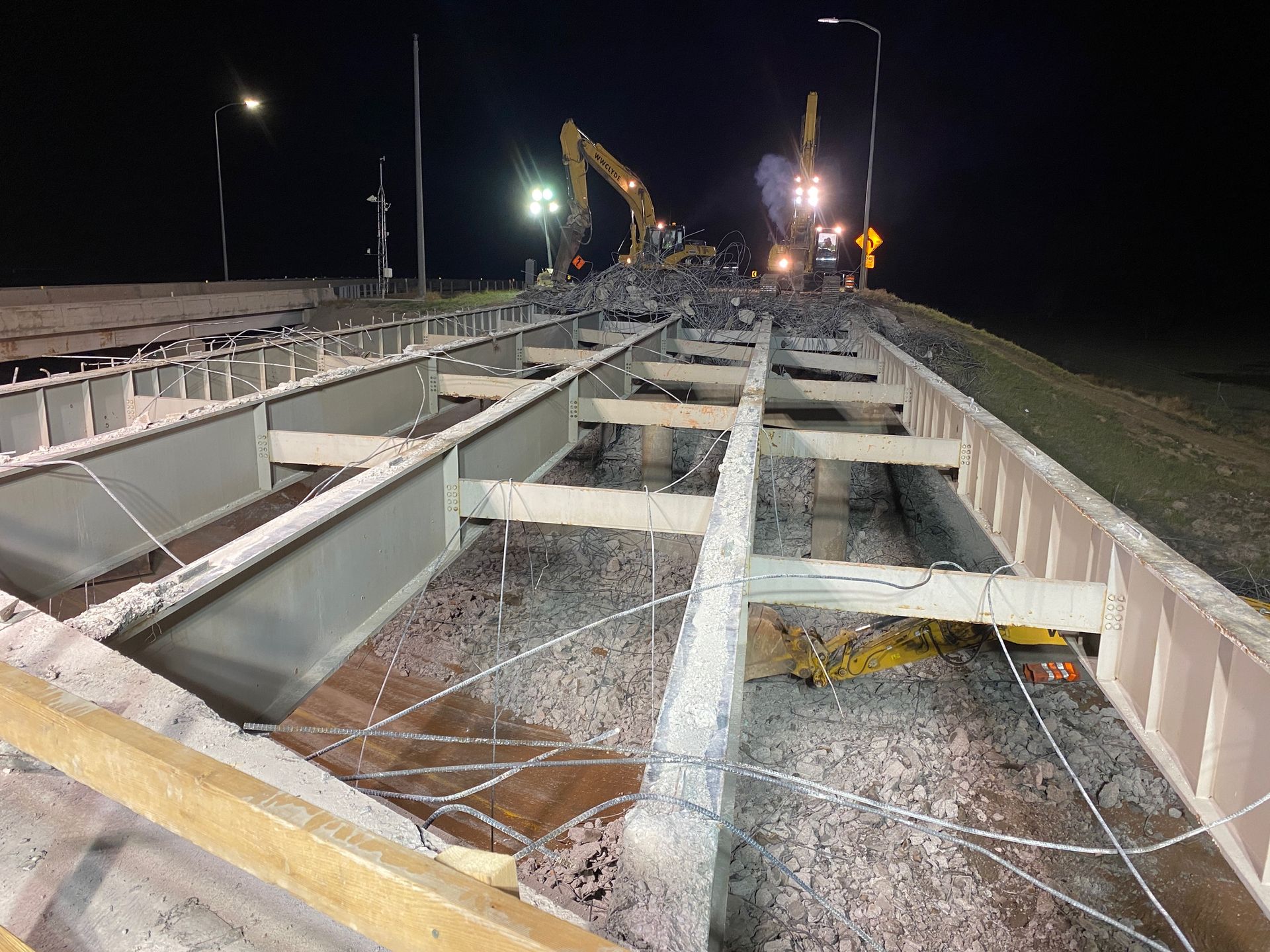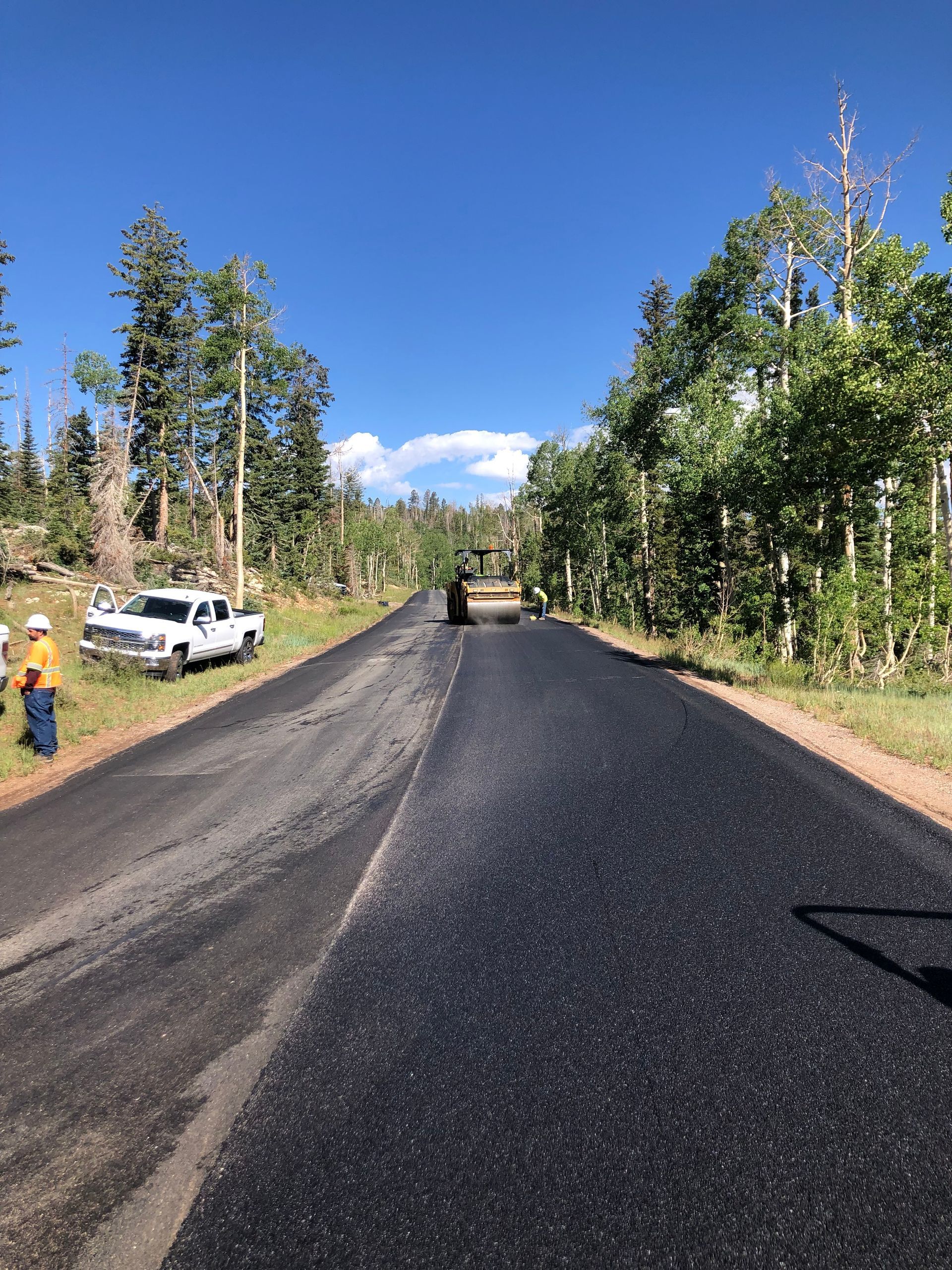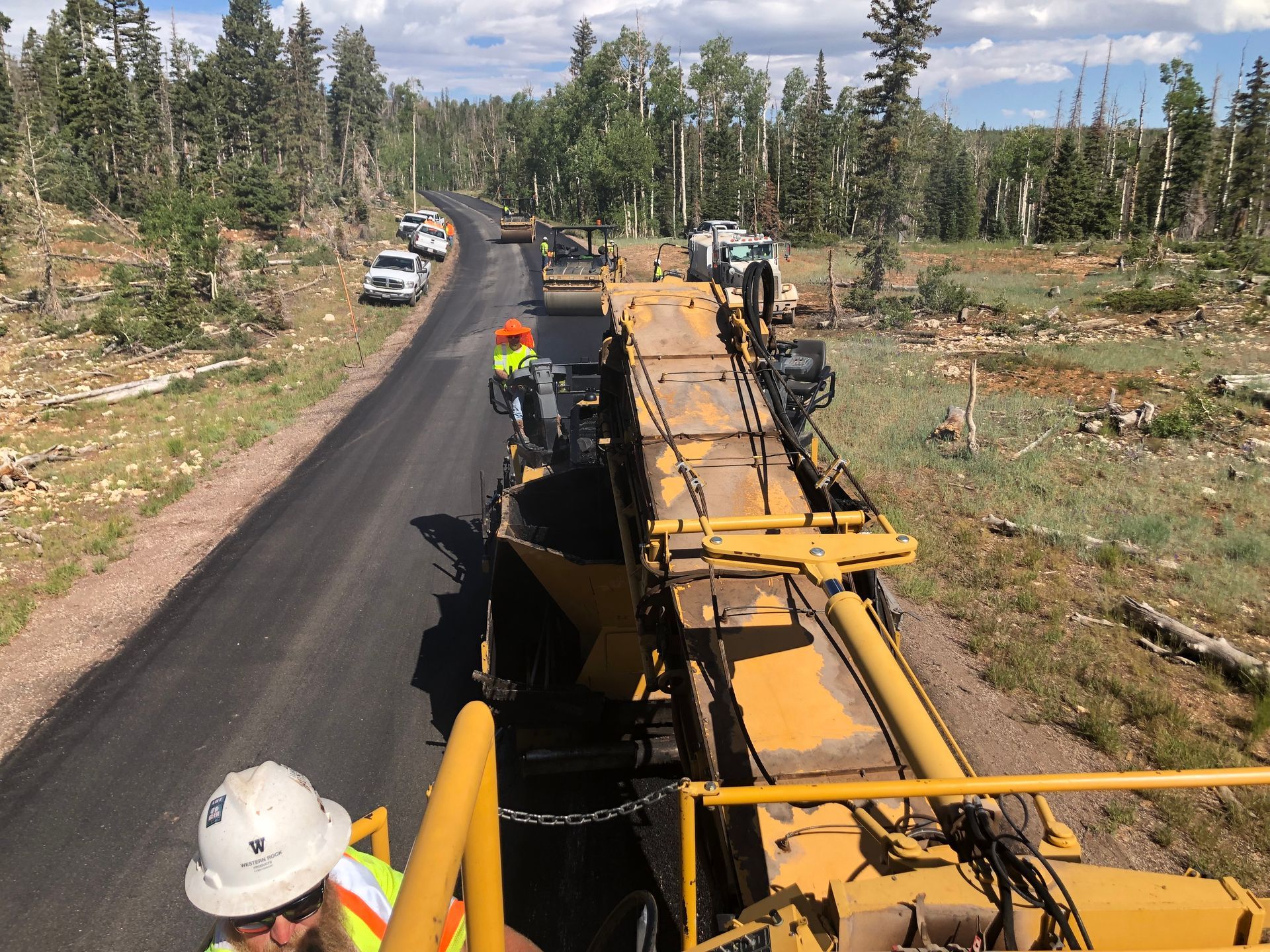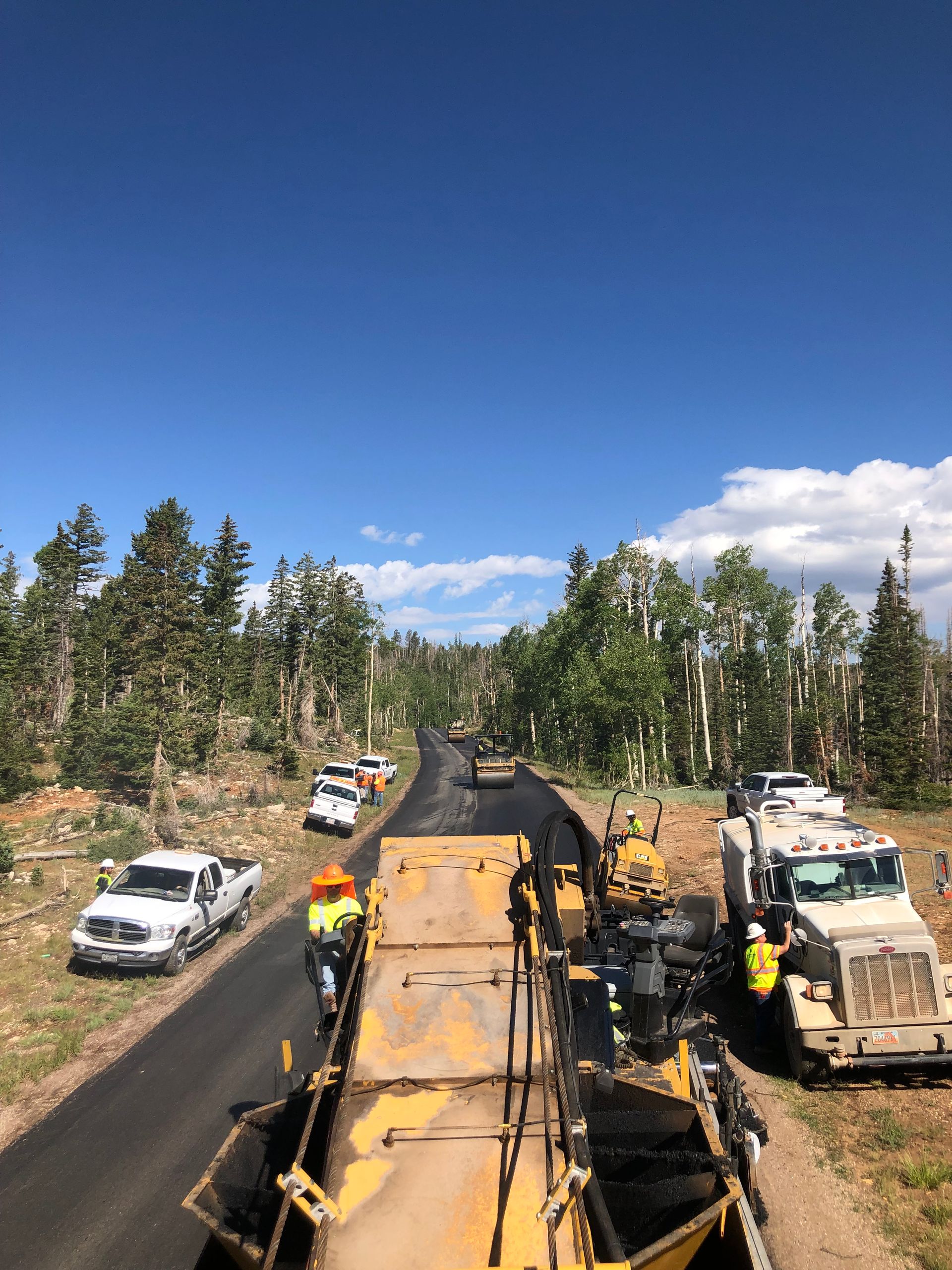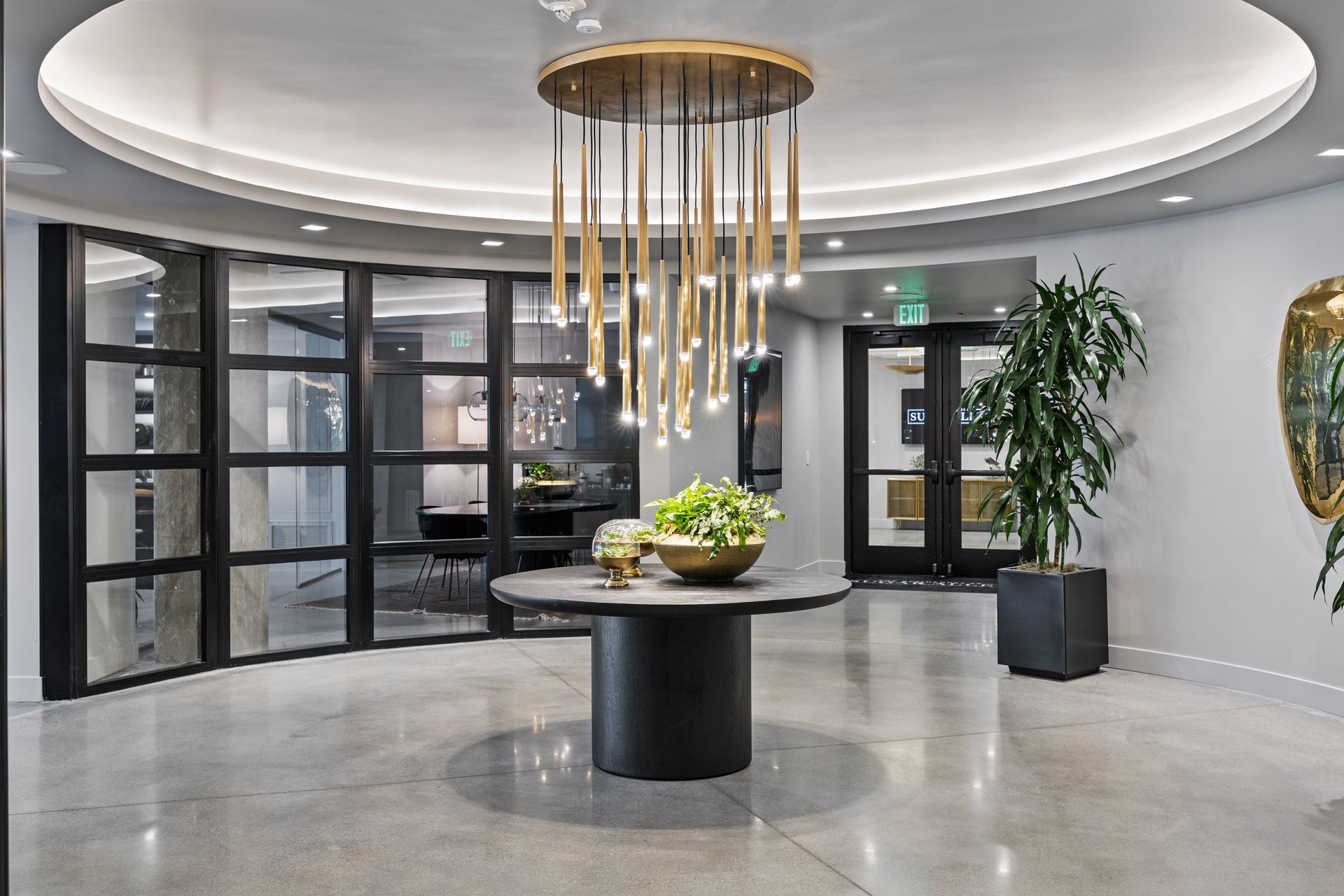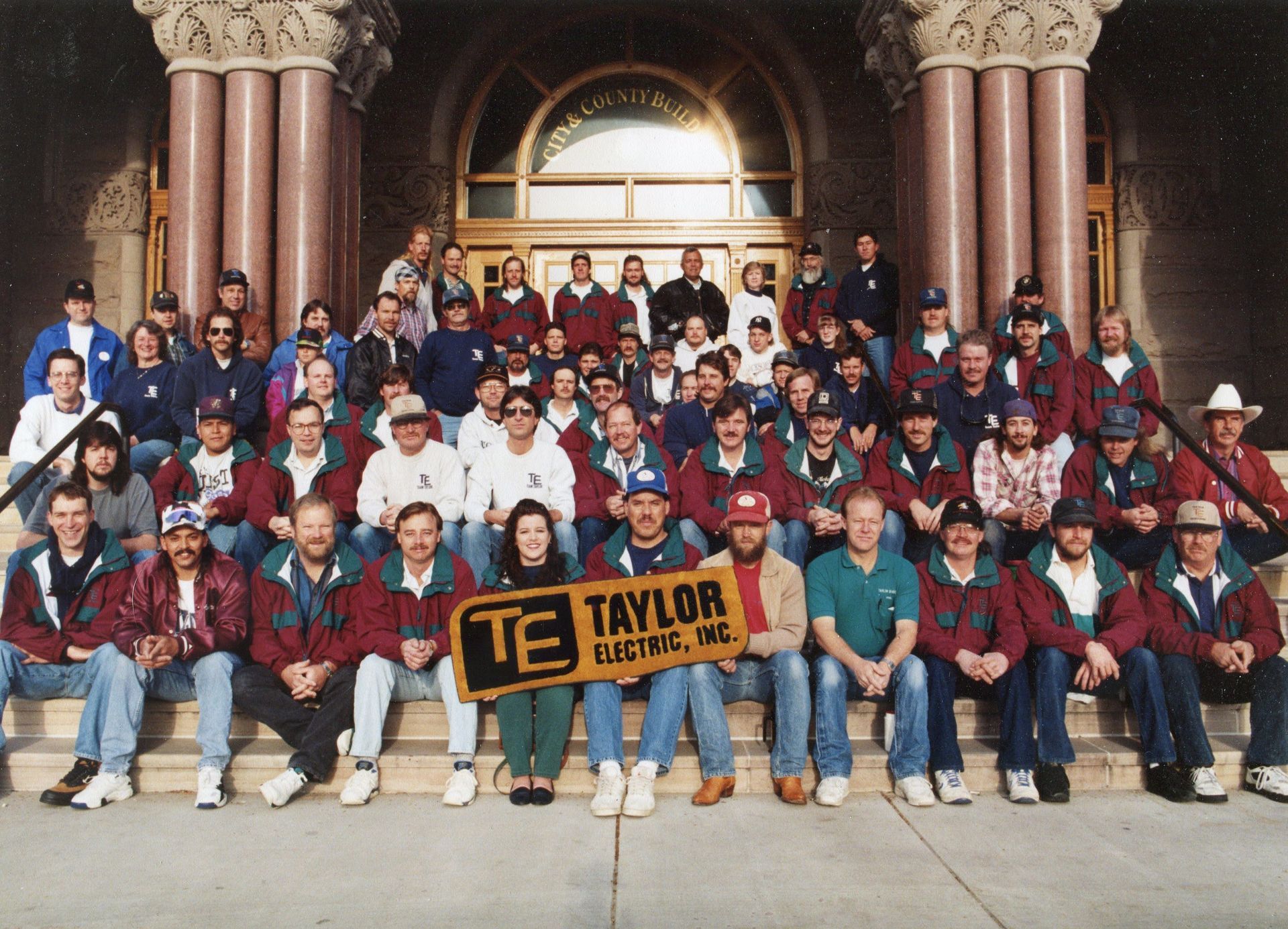UDOT’s top projects highlight a busy season in horizontal construction as the department seeks to connect communities through well-engineered and well-constructed roads. By Taylor Larsen
West Davis Highway (Davis County)
Cost: $750 million
GC: Farmington Bay Constructors (Ames Construction, Wadsworth Brothers Construction, and Staker Parson Materials and Construction)
Design: HNTB
The grand poobah of UDOT projects in construction is the West Davis Highway. According to the public information team, the project is a 19-mile freeway segment that will connect western Davis County with the major traffic artery of I-15. The completed highway will improve access between western Davis County communities and link them to the Beehive State’s major vehicular artery, the I-15. As this area of the state grows, the new highway will help accommodate the continued rapid growth of Davis County and adjoining counties.
The four-lane divided highway will run from I-15 in Farmington to 4500 West and the future extension of S.R. 193 in West Point, and includes six new interchanges providing access to Farmington, Kaysville, Layton, and Syracuse.
The design-build project also consists of a system-to-system interchange, multiple local interchanges, intersection improvements, and construction of connecting roadways and a trail system.
With this massive project, Farmington Bay Constructors—a joint venture of Ames Construction, Wadsworth Brothers Construction, and Staker Parson Materials and Construction—was selected to utilize each member’s management, supervisors, equipment, resources, and specialties to accomplish the work.
Early work has set the project up for success. Initial research and a 7–8-month test fill by the project team provided good data about how the soil would behave during the pursuit. That early research pushed forward a high-quality design, lowered risk, solidified the schedule, and provided confidence in the cost estimate.
Construction on this new highway will continue into 2024.
U.S. 89 (Davis County)
$473 million
GC:Oak Hills Constructors (Ralph L. Wadsworth Construction, Granite Construction)
Design: Horrocks Engineers, Michael Baker International
Another Davis County project is getting lots of attention, and rightly so. The nearly half-billion-dollar U.S. 89 project is impressive. UDOT planned to widen U.S. 89 from four lanes to six and remove stop lights between S.R. 193 in Layton and Main Street in Farmington. The project includes four new interchanges and two new bridges over the highway, along with new frontage roads, pedestrian underpasses, a multi-use trail, and bicycle improvements.
The U.S. 89 reconstruction is the “first progressive design-build in the state and one of the largest in the country,” said Bryan Mouser, Operations Manager at Michael Baker International’s Utah office.
What is a progressive design build (PDB)? It has the qualifications-based parts of a CM/GC project with design-build’s (DB) penchant for effective teamwork, accountability, and quicker delivery times, while adding innovation and reducing risk for all parties. According to those interviewed, the contractual delivery method on this project has been a massive success.
“We’ve been able to interact with the state and contractors to come up with what everyone thought would be the best solution,” said Mouser of the work via PDB. His firm, along with Horrocks Engineers, Granite Construction, Ralph L. Wadsworth Construction, and UDOT all came together to solve right of way issues, work around an oil pipeline that delivers tens of thousands of barrels per day, perform 50 miles of utility relocations, and challenge a lawsuit from a local resident.
While traditional DB would have to wait until everything was resolved, PDB helped move pre-construction forward, with contractors on the Oak Hills Constructors team working as consultants to bring the best project forward.
Mike MacArthur, Vice President of Preconstruction with Ralph Wadsworth Construction (RLW), described the different delivery methods as different boxes that package up these complex highway projects.
“When the box is harder to define and there are some unknowns, PDB is best,” he said. “Instead of staying inside of a square box” as one would do in other delivery methods, MacArthur detailed how PDB allows teams to change the shape of the box entirely. Progressive design concepts, similar to DB’s alternative design concepts, looked for best solutions on U.S. 89. One of those was highways going under crossing streets instead of bridging over, which maintains nearby residents’ iconic views of the mountains to the east.
As PDB pushes the highway forward, additional road safety will be at the forefront. U.S. 89 connects I-84 to the north to I-15 in the south, but has traditionally been more accident-prone because of the high speeds of U.S. 89 and the low speeds of the cross streets. These problems are being mitigated, said Mouser. “Now, you can travel straight through from one [interstate] to the other” with dedicated on- and off-ramps that help traffic integrate safely.
Beyond safety, Mouser praised the project for eliminating some of the pollution that came from the stop-start traffic in rush hour that has been commonplace on U.S. 89. Communities will soon have access to faster thoroughfares, less pollution from idling at stoplights, and an overall better road across Davis County thanks to the work done by the U.S. 89 project team.
The project will be complete in 2023.
I-80 & I-215 (Salt Lake County)
$146.5 million
GC: Ralph L. Wadsworth Construction
Design: Michael Baker International
This high-use corridor on Salt Lake’s east side is going through a major overhaul. Construction teams are removing the existing pavement and replacing it with new concrete on I-80 from 1300 East to 2300 East and I-215 from 3300 South to 4500 South.
“Anyone coming from Park City or utilizing Parley’s Canyon will pass through the job site,” said Darren Burton, Transportation Project Manager at Michael Baker International, of the extensive scope of the project and affected public. Beyond the paving efforts on the two-mile sections of each freeway, construction teams are adding another lane from 1300 to just past 2300 East to push available eastbound lanes from three to four.
The area around the job site has plenty of traffic, with lots of activity from nearby parks, residences, and high schools. With so much activity and right of way limited by nearby houses and a golf course, the full reconstruction was a little more challenging on both portions of the project, according to Burton.
Working through these challenges, the design-build project team of Michael Baker International (MBI) and Ralph L. Wadsworth Construction (RLW) is pulverizing and recycling old concrete to create a road base for the new roadway. It is one way the team is working through concrete powder shortages as they triage different project needs.
It’s one of over 10 projects that this design-build team of MBI-RLW has done together, which has helped make this project a positive impact on the state’s transportation network. “There’s a lot of trust and a lot of history that really benefits both of us,” said Burton. “We’ve worked through many issues and found a lot of great solutions.
Crews are building on westbound I-80 for a future lane-add project to accommodate the growing population in Summit County and eastern Salt Lake County and adding another eastbound lane from 1300 to just past 2300 East, too. New bridges on the I-80 portion of the project are another major feature and source of goodwill from the local community. It is one of the first times that Chris Dillman, Project Manager for RLW, said he could remember so much positive support for a roadway project.
“Everyone who lives by those bridges feels ownership of those bridges,” said Dillman of the 1300 East and 1700 East bridges. Whether that is commuting to work, taking their kids to school, or biking over to the park, thousands of nearby residents use the bridges each day. They were appreciative of the project and even came out by the dozen to see one of the innovative construction methods on the project: accelerated bridge construction slides.
With this construction method, new bridges are prefabricated very near to their final destination. After demolishing the old bridge, construction teams slide the new bridges into place and install them.
Dillman reported that nearby residents were outside as early as 2AM watching the bridge demolition with their kids and grandkids. As the bridge slide commenced, Dillman said steady streams of folks at the park or at nearby observation points would sit and watch the process for a few minutes at a time. The entire bridge slide process was completed in 20 hours and got traffic up and running to start the next work week.
The project is expected to complete in 2023.
I-15 and I-70 (Millard, Iron, and Beaver counties)
Cost: $20.1 million
GC: WW Clyde, Intermountain Slurry Seal, Sunroc
Design: UDOT
Multiple construction methods and contractors are involved on this expansive project that will repave roads and replace bridge pads with construction crews hard at work in three counties. This project will repave three sections of I-15 from Beaver through Cedar City and replace the driving surface and barrier walls on the I-70 bridges over I-15 in Millard County.
Caleb Mendenhall, Project Manager for WW Clyde said that their scope of the project includes bridge replacements on two bridges. At the junction he and crews are replacing bridge decks and bearing pads on the eastbound bridge to I-70 and the westbound bridge that moves traffic south from I-70 onto I-15.
The bridges have been repaired and overlaid since the final stamp of approval on these bridges was given in 1966, but that bridge decks and bearing pads have reached the end of their design life.
Mendenhall said that UDOT has a high standard for their bridges, with fiber-reinforced concrete a staple of bridge deck materials. In the mixing process for this type of concrete, bits and pieces of fiberglass are added in to give the resulting structure extra strength, with the concrete able to delay reconstruction for many more years than traditional concrete.
While the parapets, bridge decks, and bearing pads will be demolished, the original girders from 1966 will remain in place, with the steel beams that support the deck will still be there when crews pour the bridge deck later this month.
Another portion of the project is under the careful watch of Rusty Price, President of Intermountain Slurry Seal, the second of the three contractors involved on the project.
Their part of the project is divided into two separate jobs—one section in Beaver and one section in Cedar City. With thousands of people traveling through I-15 at these two points, the jobs are essential.
Price describes this micro surfacing project on the two portions of I-15 as the final wearing course over the hot mix asphalt to give the road its smooth ride. One of the main benefits of this type of preventative maintenance, according to Price, comes through sped-up cure times, with micro surfacing taking less than an hour to cure, far less than its hot-mix asphalt counterparts.
Their two parts of the project went relatively quickly, with the cold-mix paving system containing emulsified asphalt, mineral aggregate, portland cement, and water that goes into spreader box and then goes onto the roadway. The Beaver portion of their scope finished in seven days, while the Cedar City portion took five to complete.
With no loose shedding like a chip seal job, Price mentions that UDOT’s choice to go with micro surfacing on these jobs were good for the hundreds of thousands that travel these Utah highways. Not only that, but these improved roads will have some of the highest skid resistance and friction values.
This type of preventative maintenance is a major way organizations like UDOT are so successful at keeping Utah’s roads in top shape. “Everyone needs to remember to keep your good roads good,” said Price. “Maintain what you have.”
Construction will continue through fall 2022.
S.R. 14 (Iron and Kane counties)
Cost: $13.5 million
GC: Western Rock Products
Design: UDOT
Asphalt paving is getting more love on the S.R. 14 project in Iron and Kane Counties. UDOT will be building a new two-mile eastbound passing lane in Cedar Canyon east of Cedar City and repave several miles of the highway farther east in Kane County.
Motorists traveling to nationally recognized hotspots like Bryce Canyon National Park and Cedar Breaks National Monument will have some fresh asphalt and a smooth ride as construction presses on.
Joe Wilden, Construction Manager for Western Rock Products, a CRH Company, said in a statement that the road is also a key corridor locally. The route passes by local recreation areas Duck Creek and Navajo Lake and connects this community with Panguitch and other communities located along Highway 89 in Garfield County.
Pouring asphalt in the hot weather won’t be the biggest problem for crews on this project. Instead, it is the project’s ascent, as the road starts at 6,000 feet elevation and climbs through the thinning oxygen to 10,000 feet.
Wilden said in his statement that pavement design life will be extended by incorporating a lift of fiber strand reinforced hot mix asphalt (FSR HMA). The typical pavement section includes 2 ¾-inch FSR HMA and 1 ½-inch stone matrix asphalt surface course. Other intervals of the project include a 2-inch lane leveling course of hot mix asphalt prior to placement of the surface course to optimize smoothness and ride.
Wilden said to expect delays of 15–20 minutes on week days when traveling SR-14.
The project will complete in 2023.
